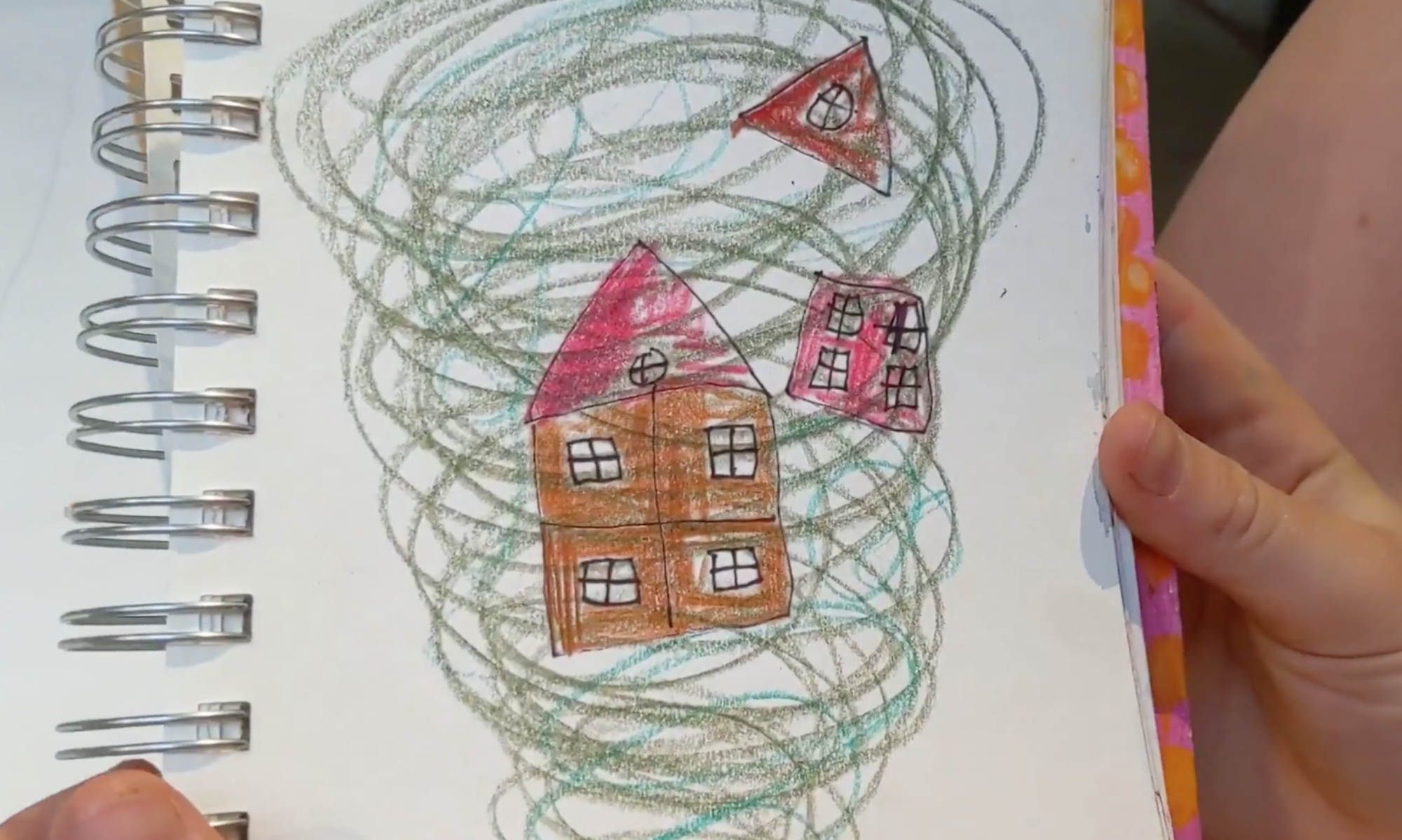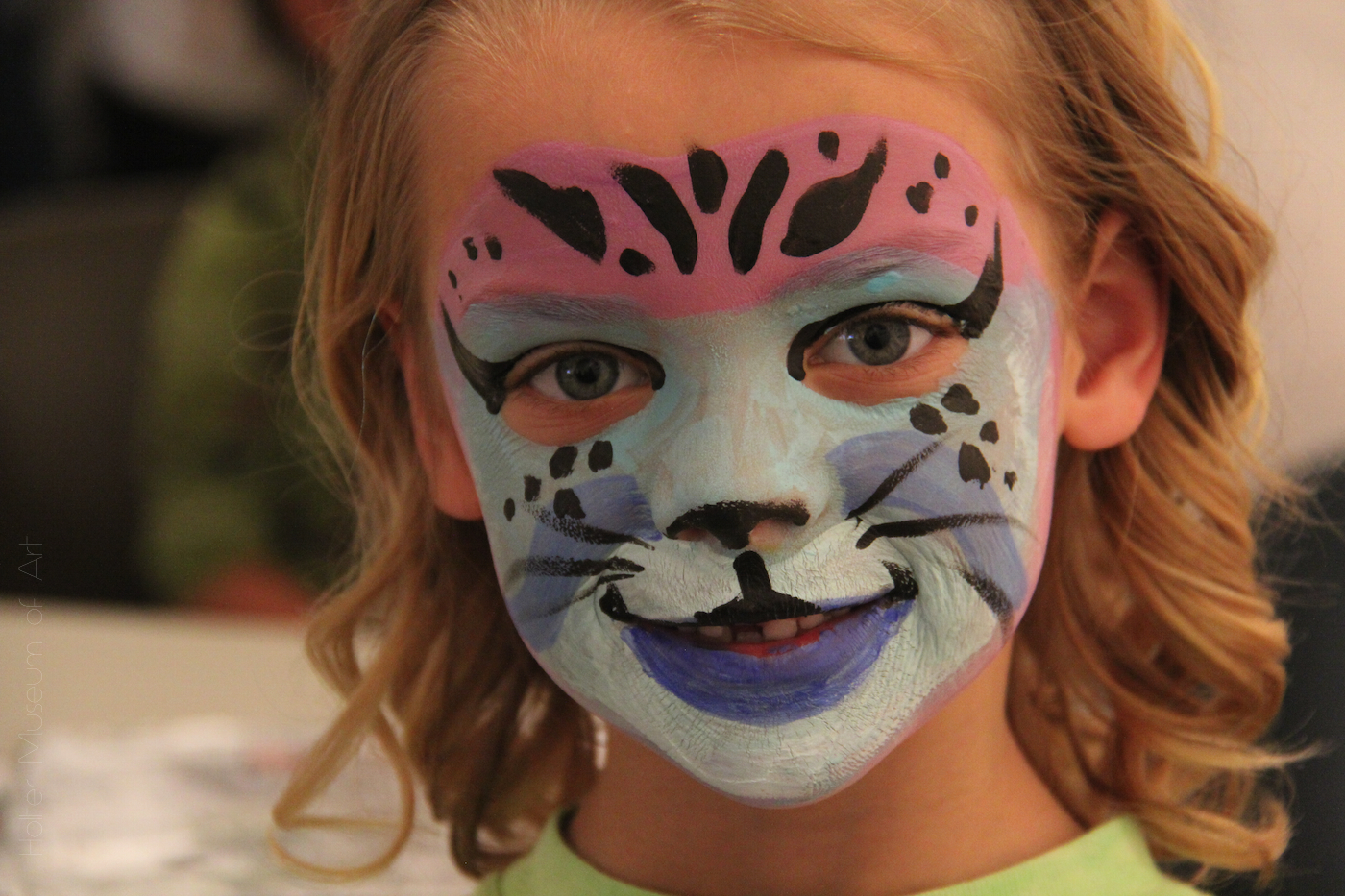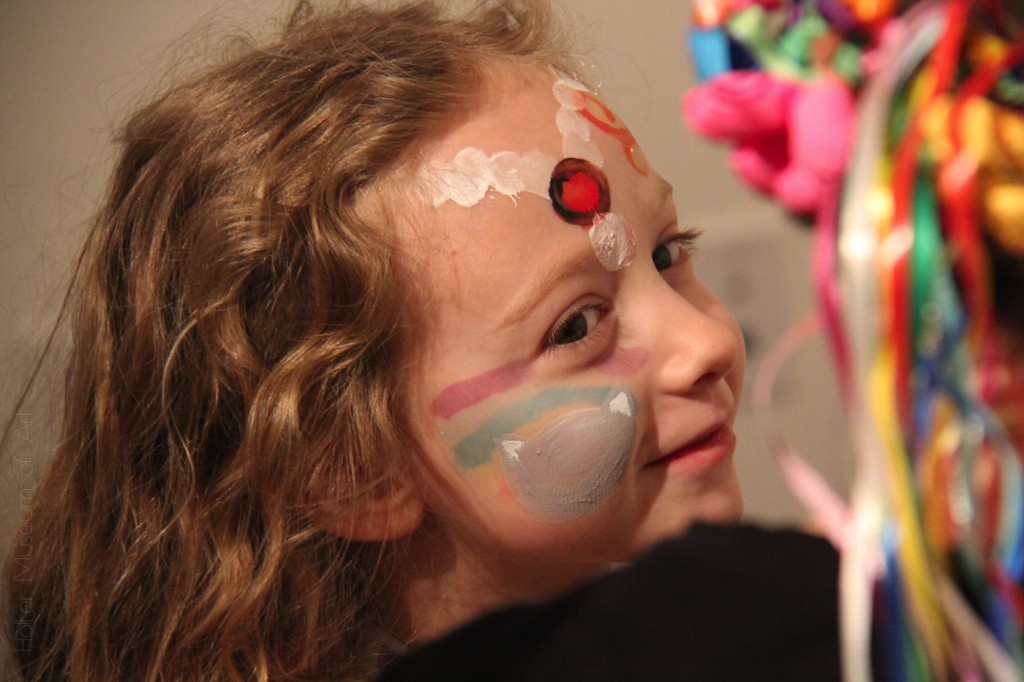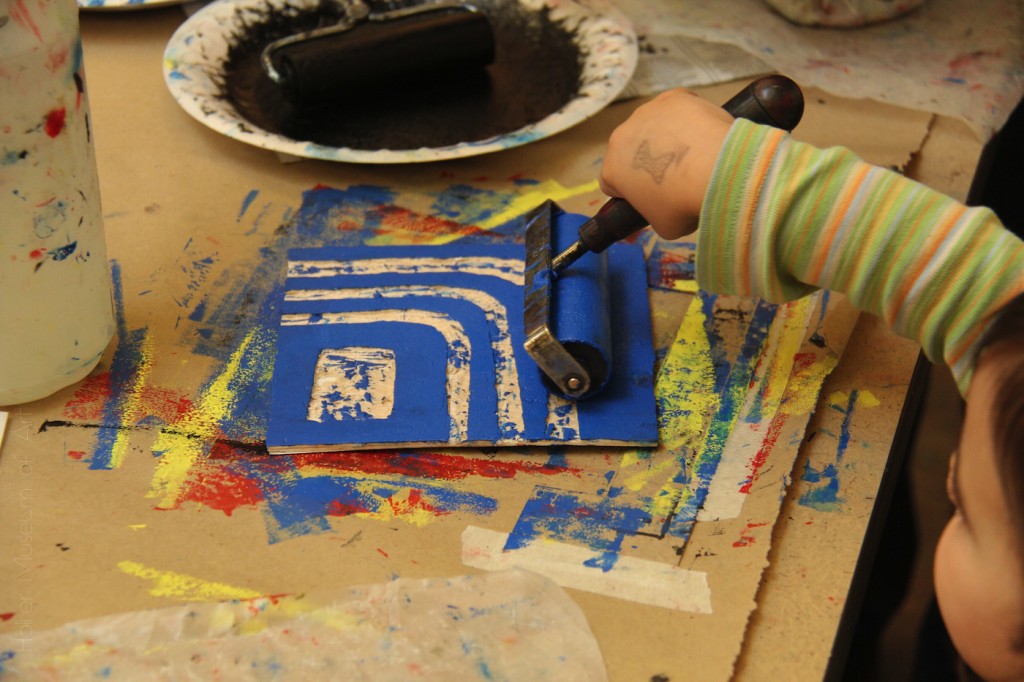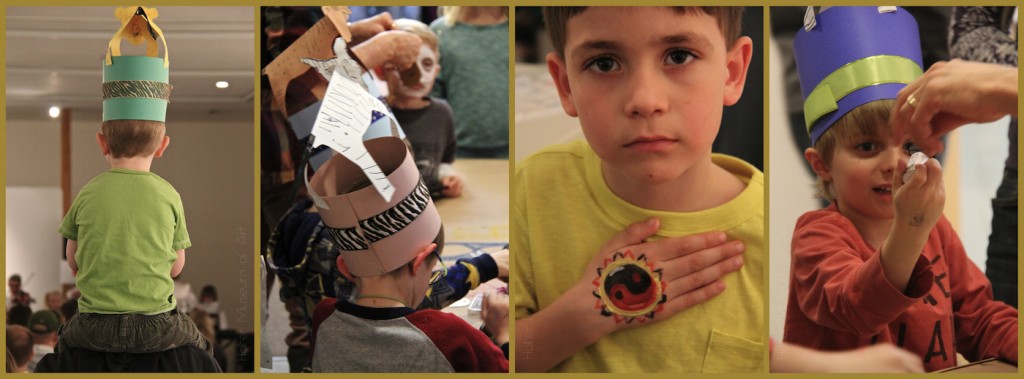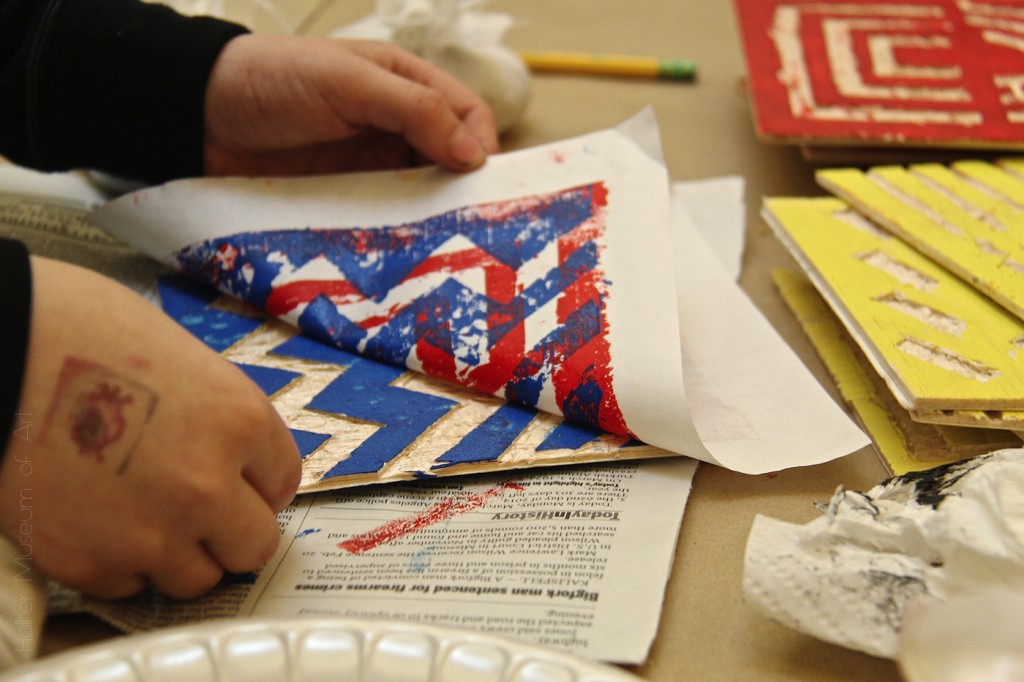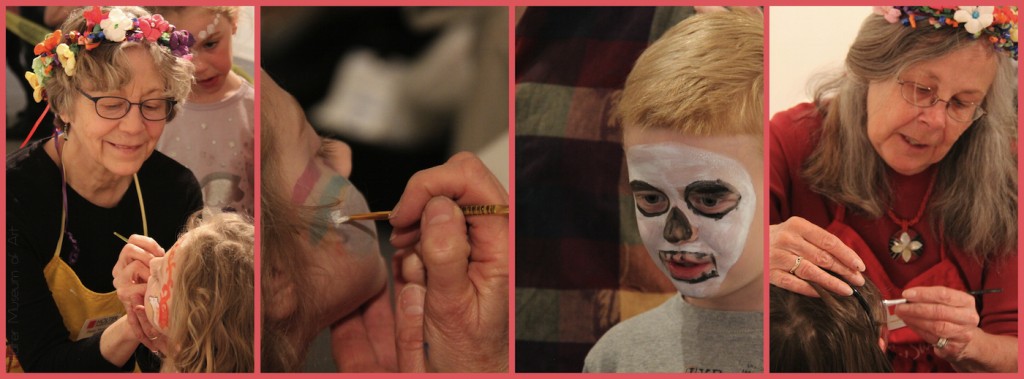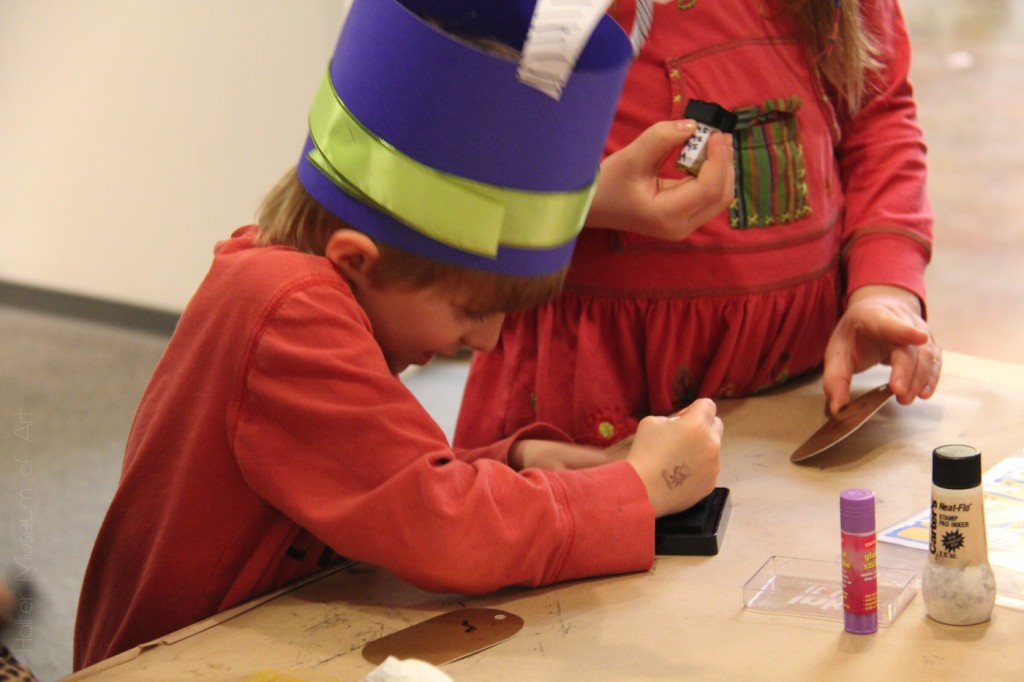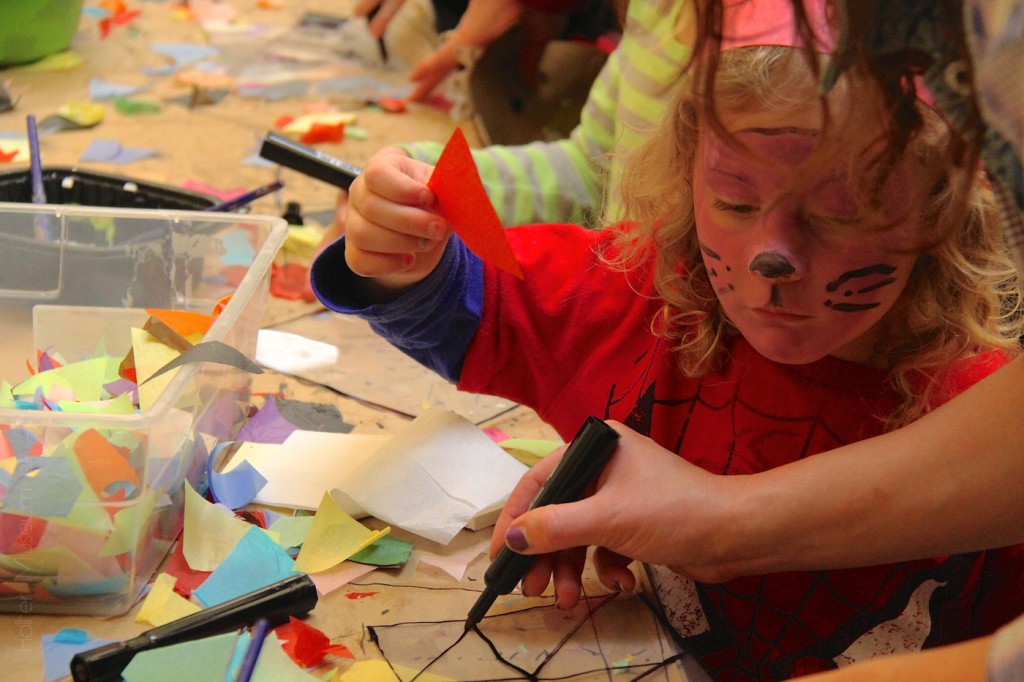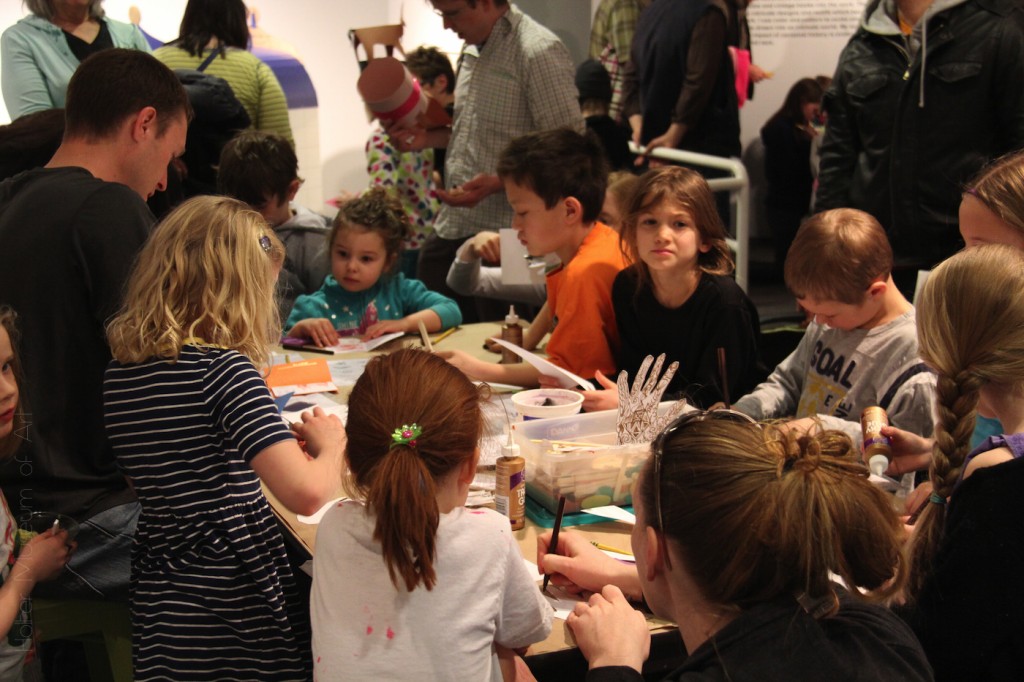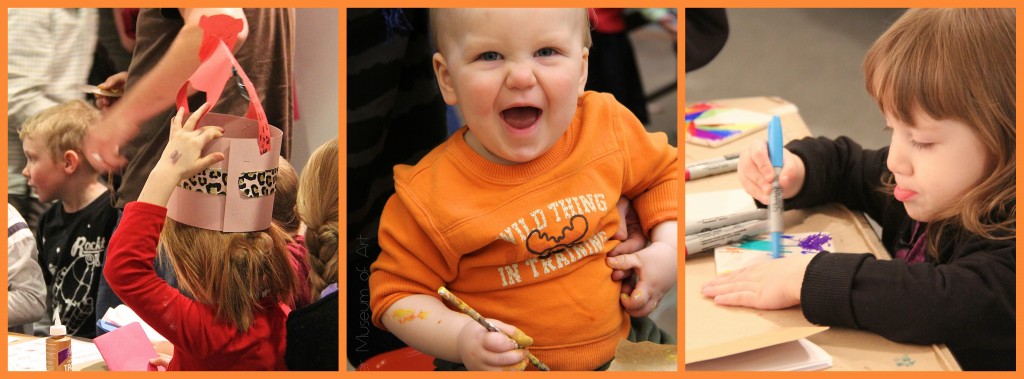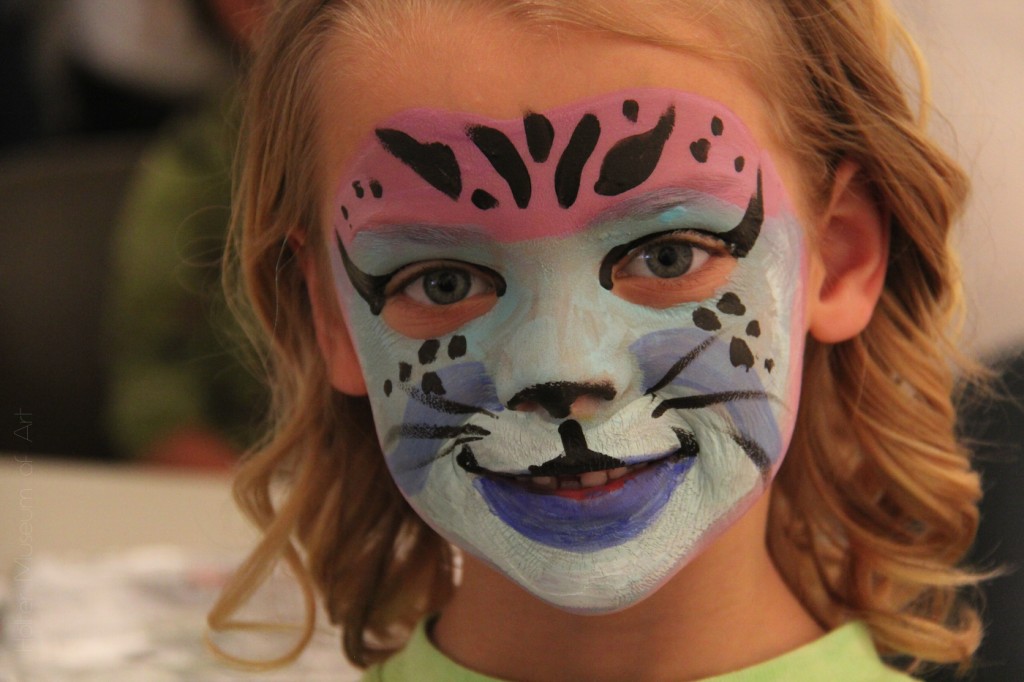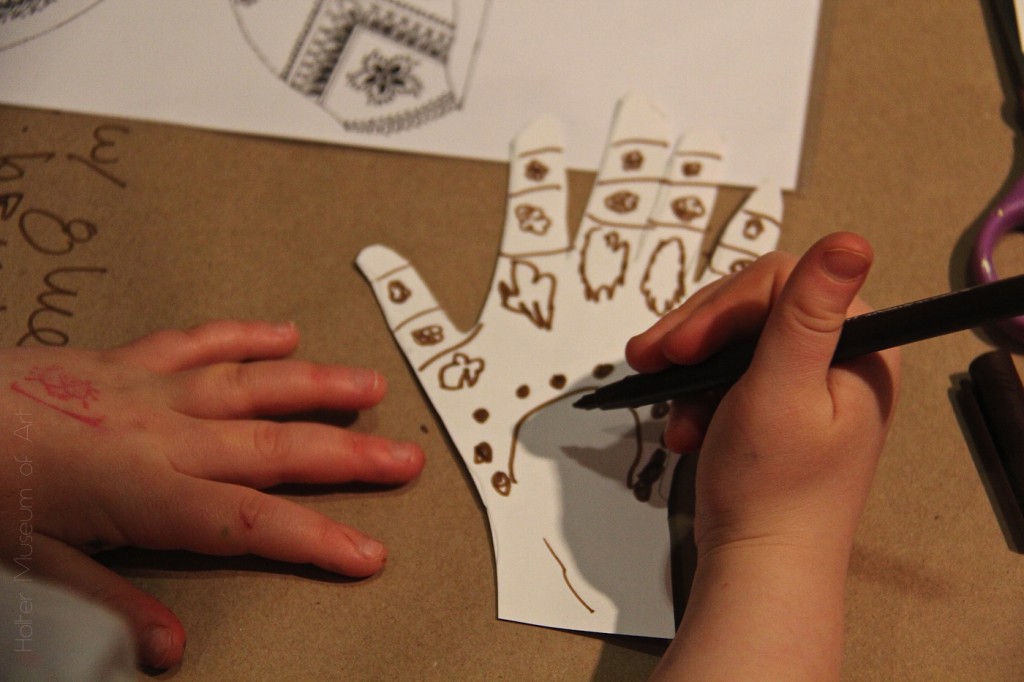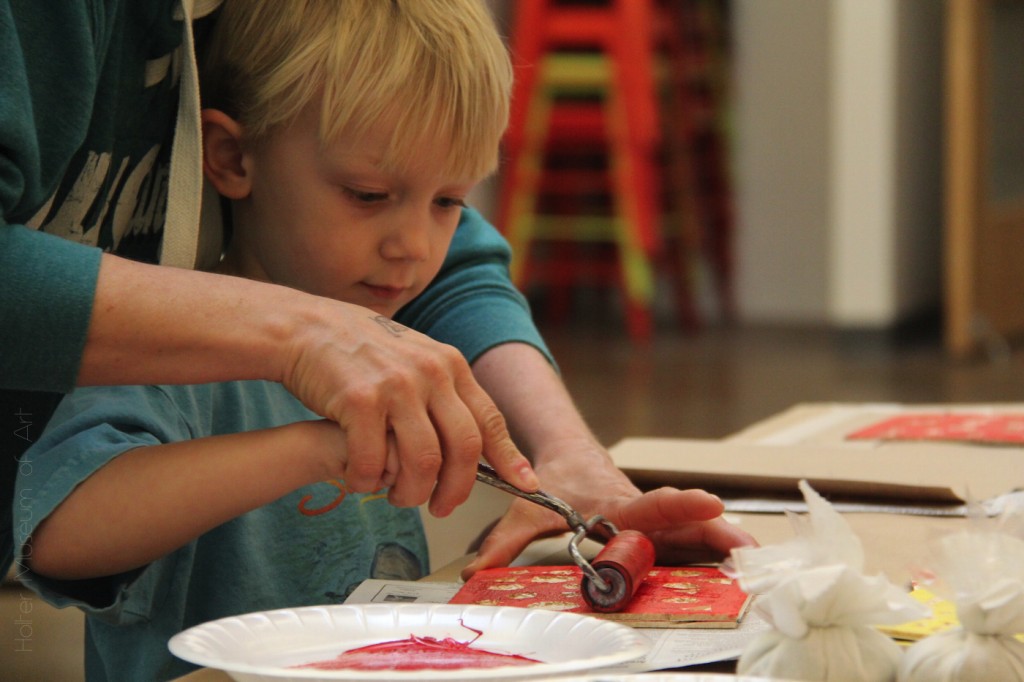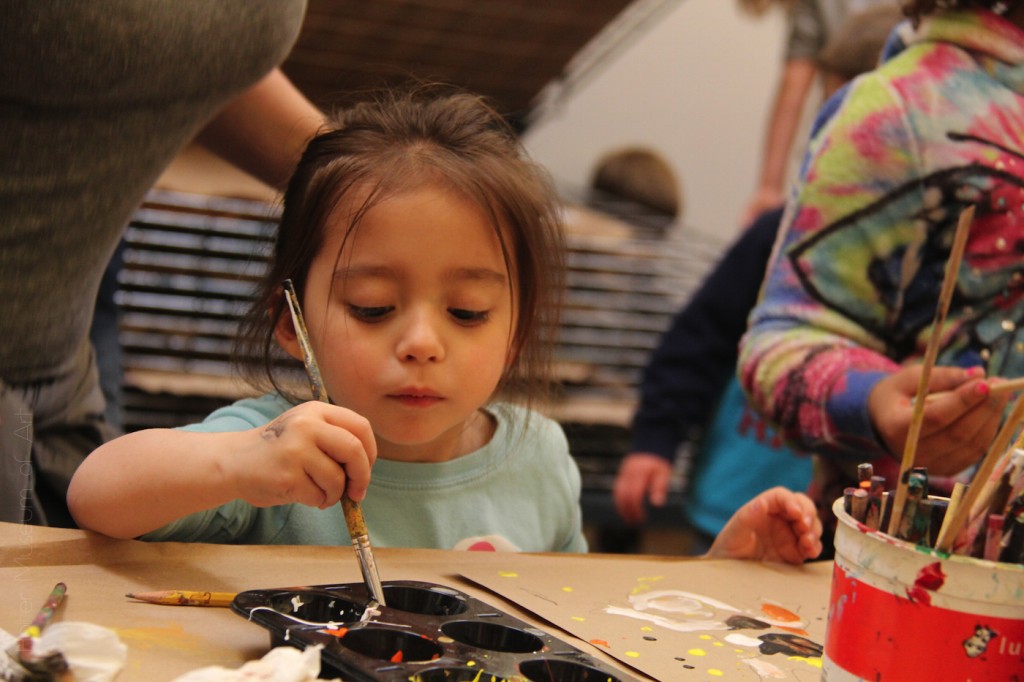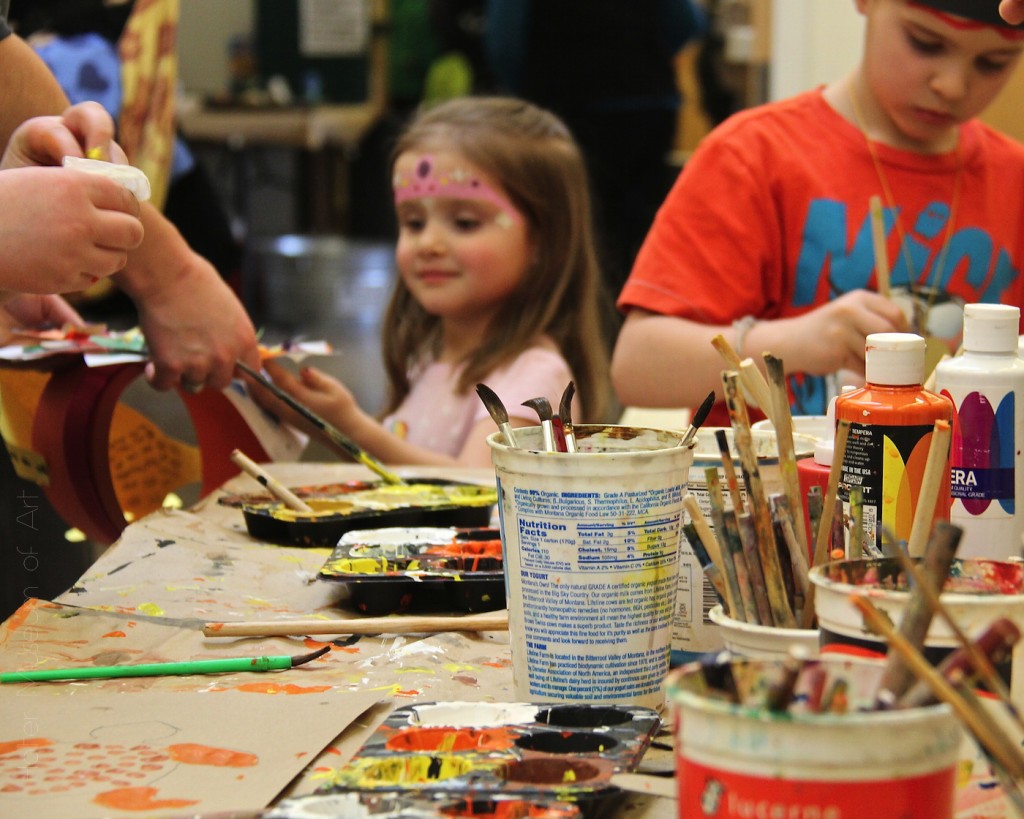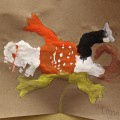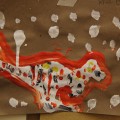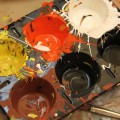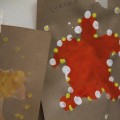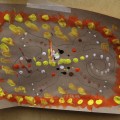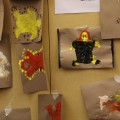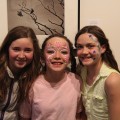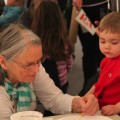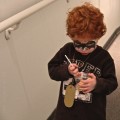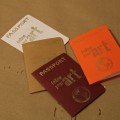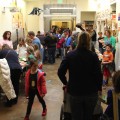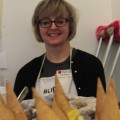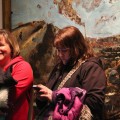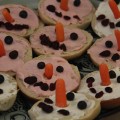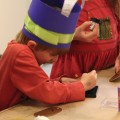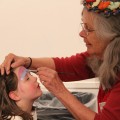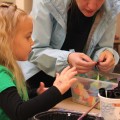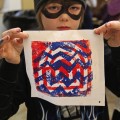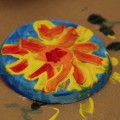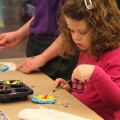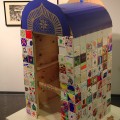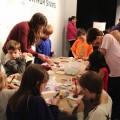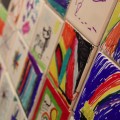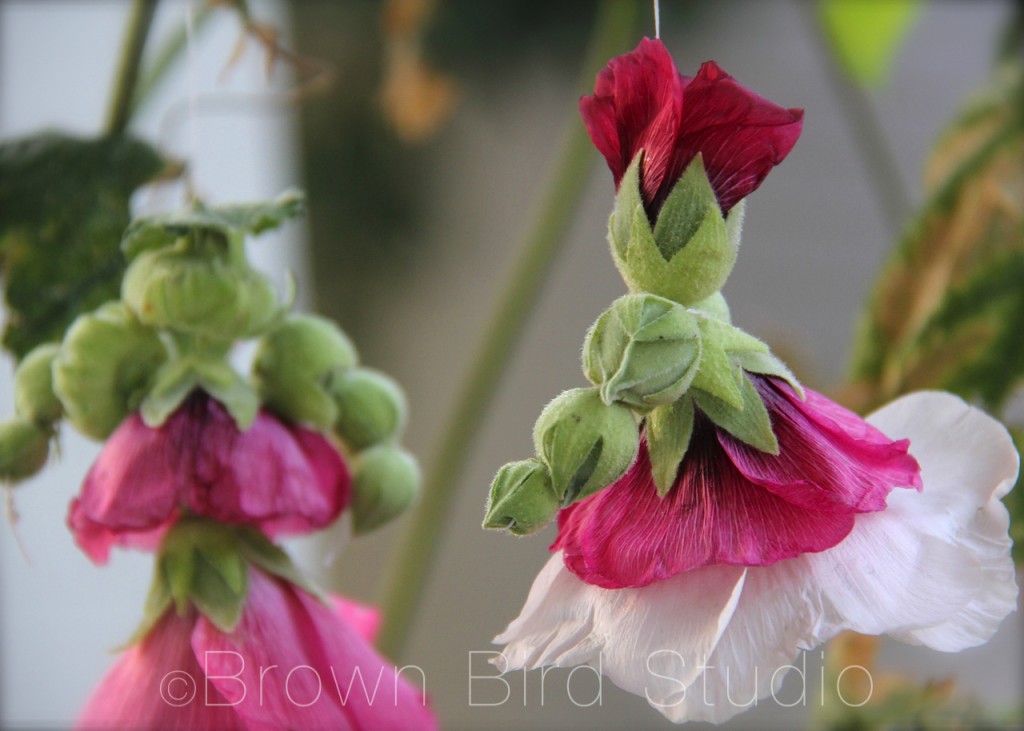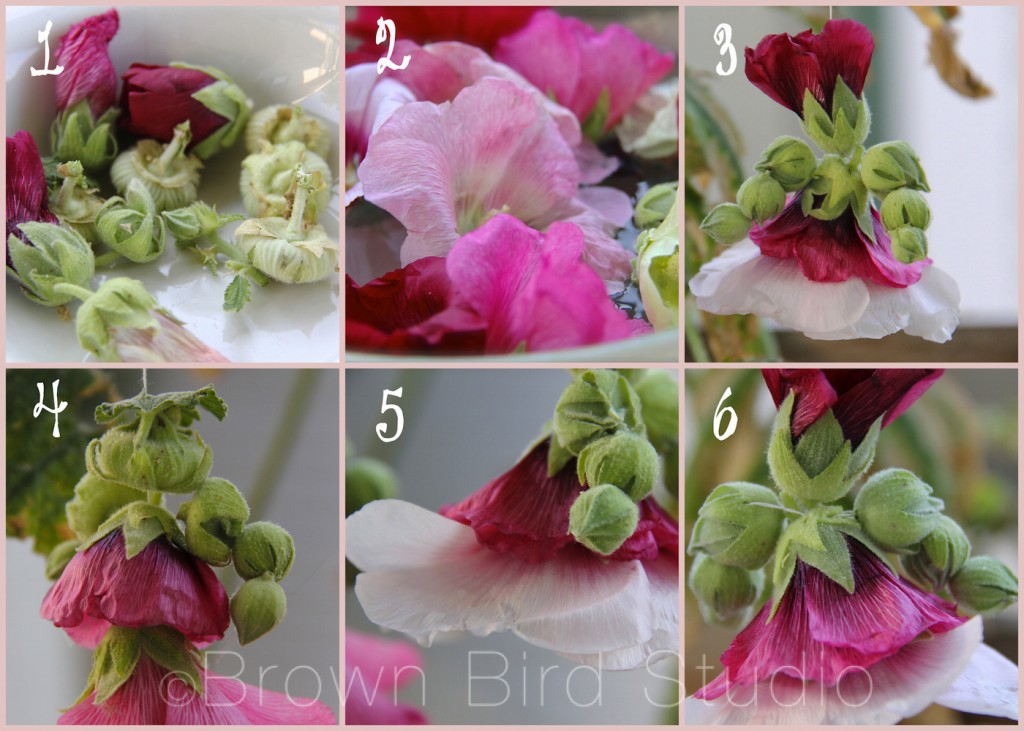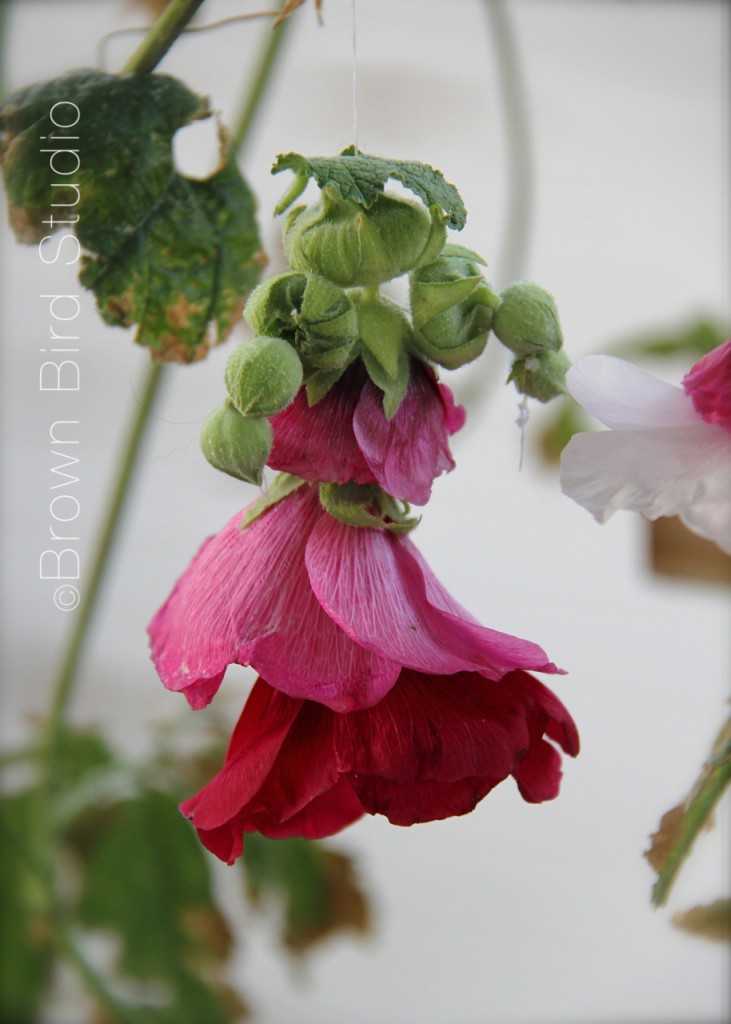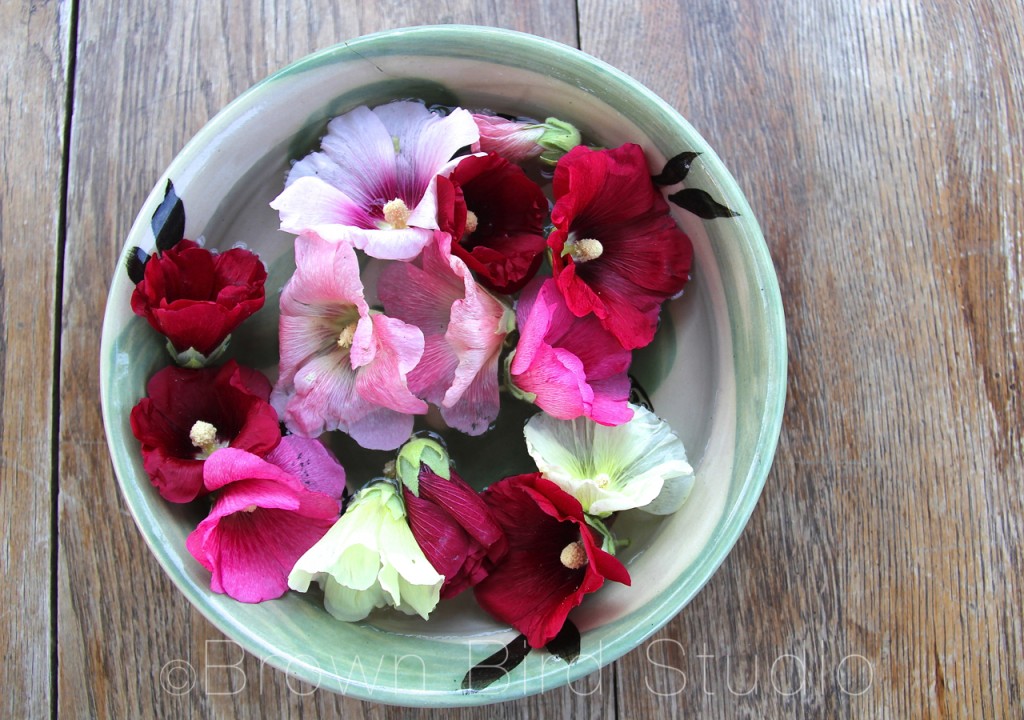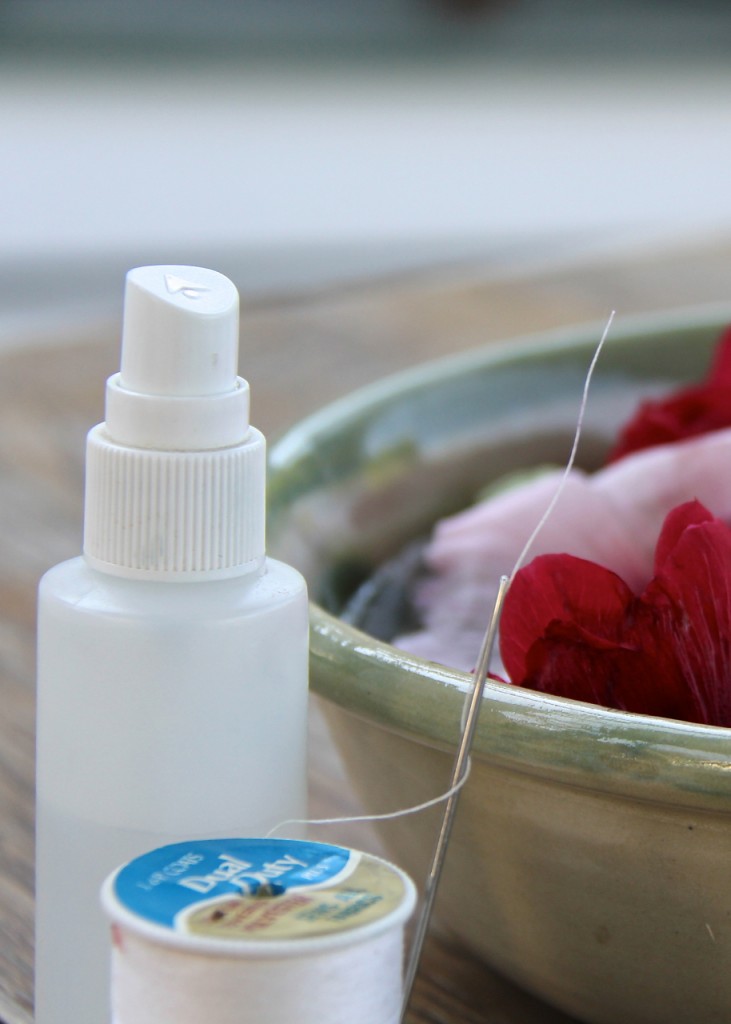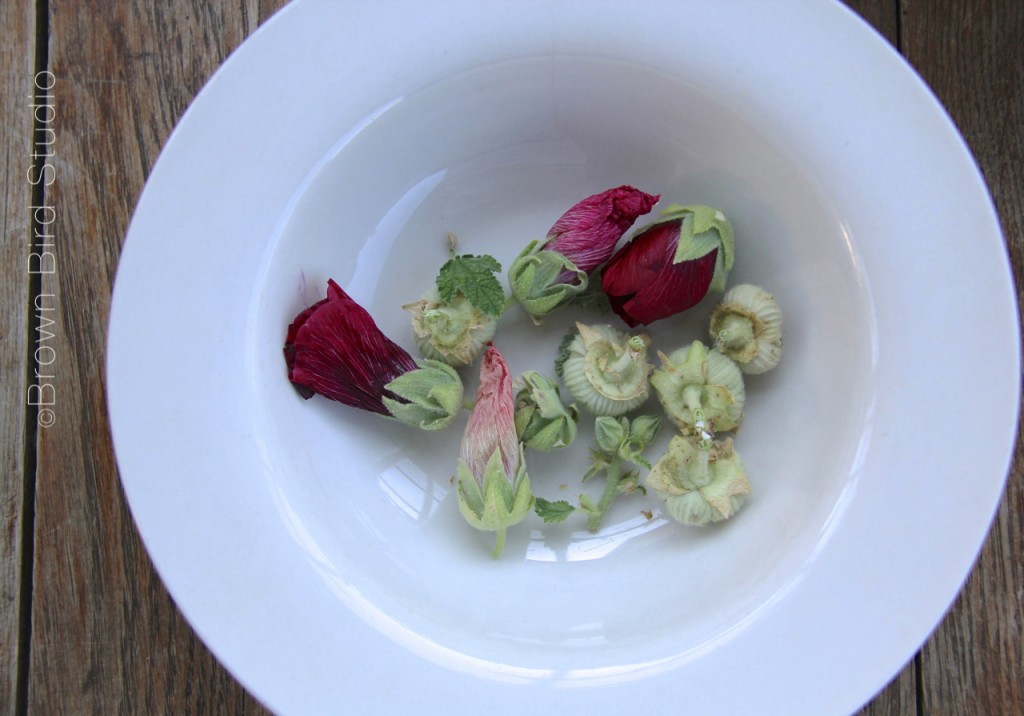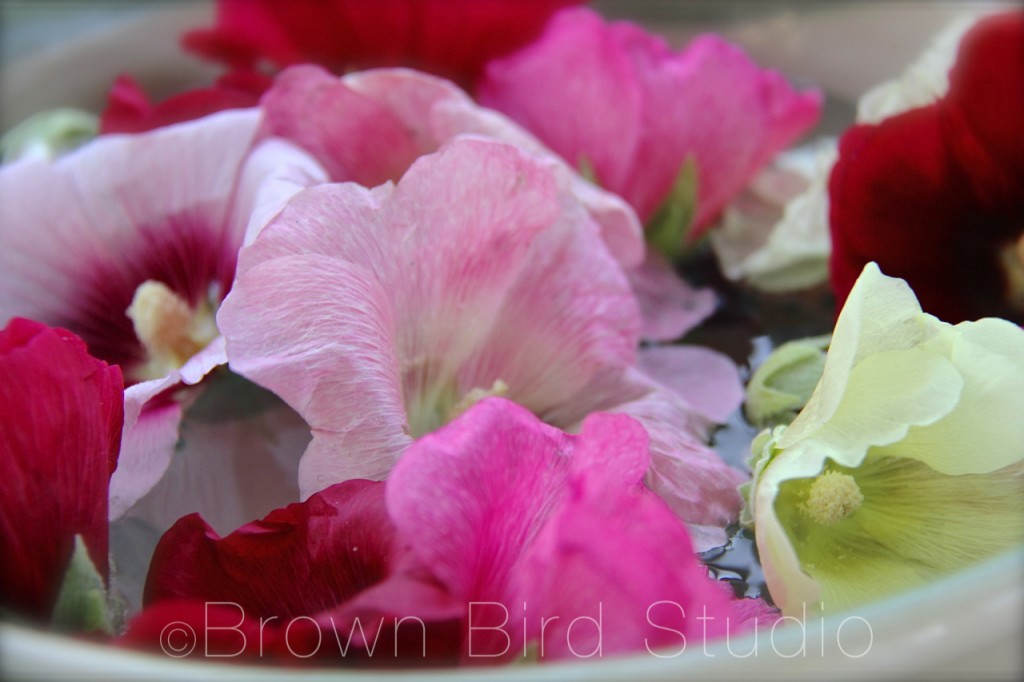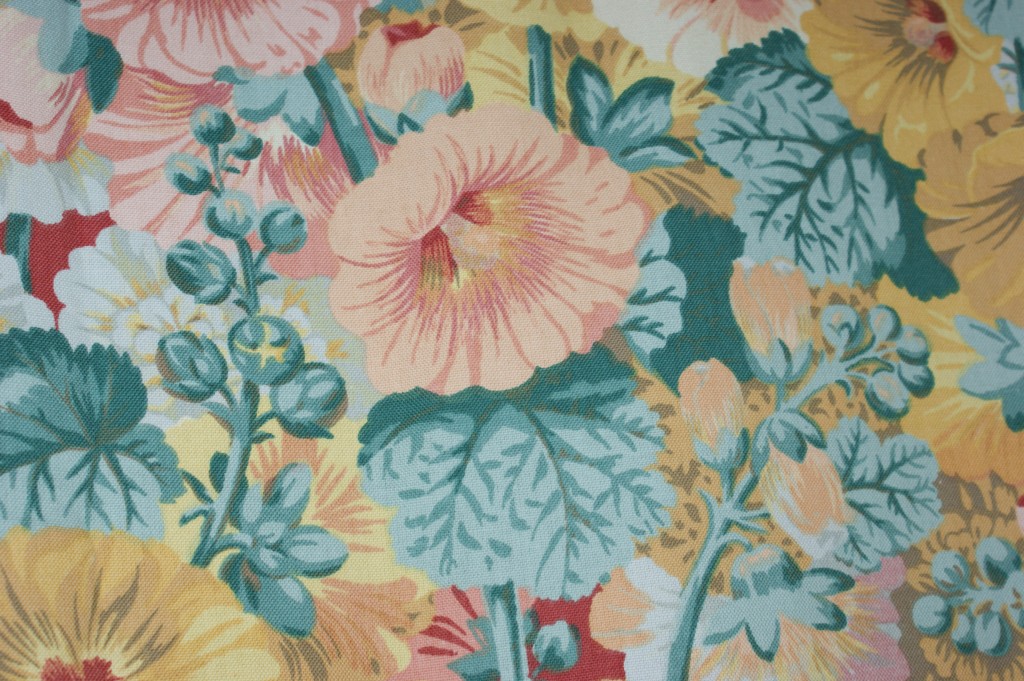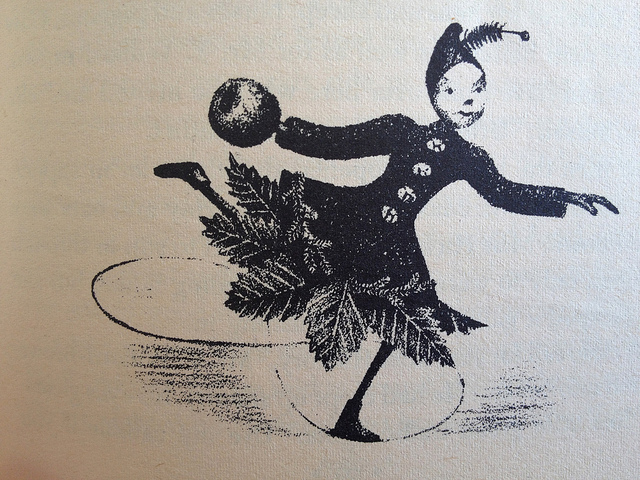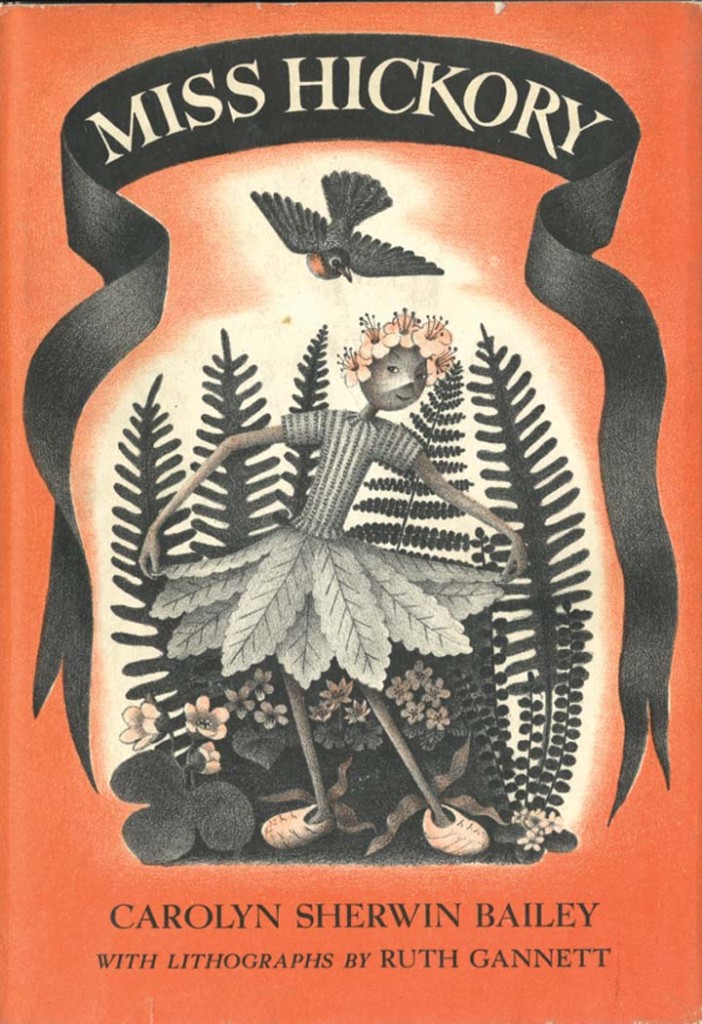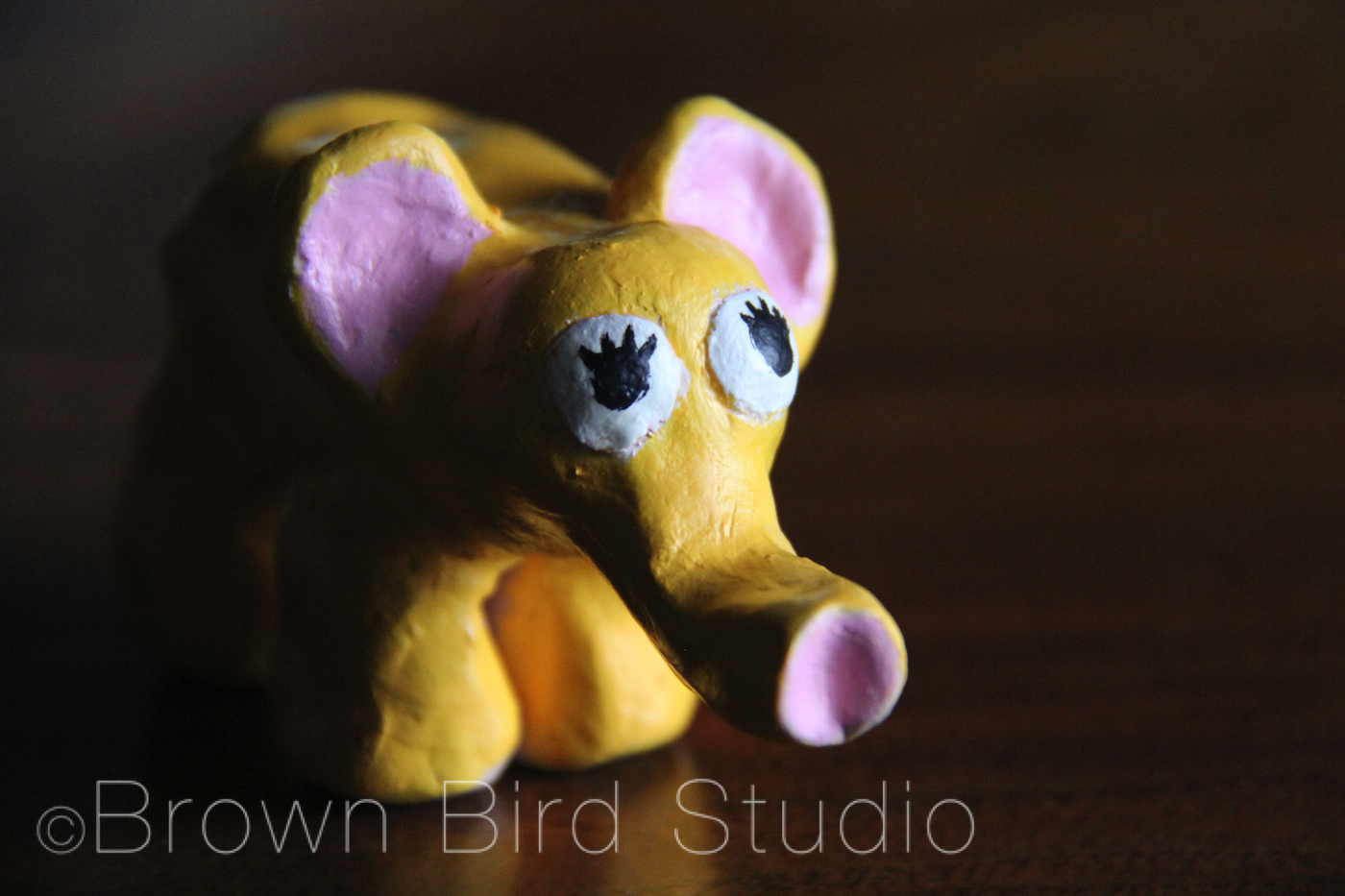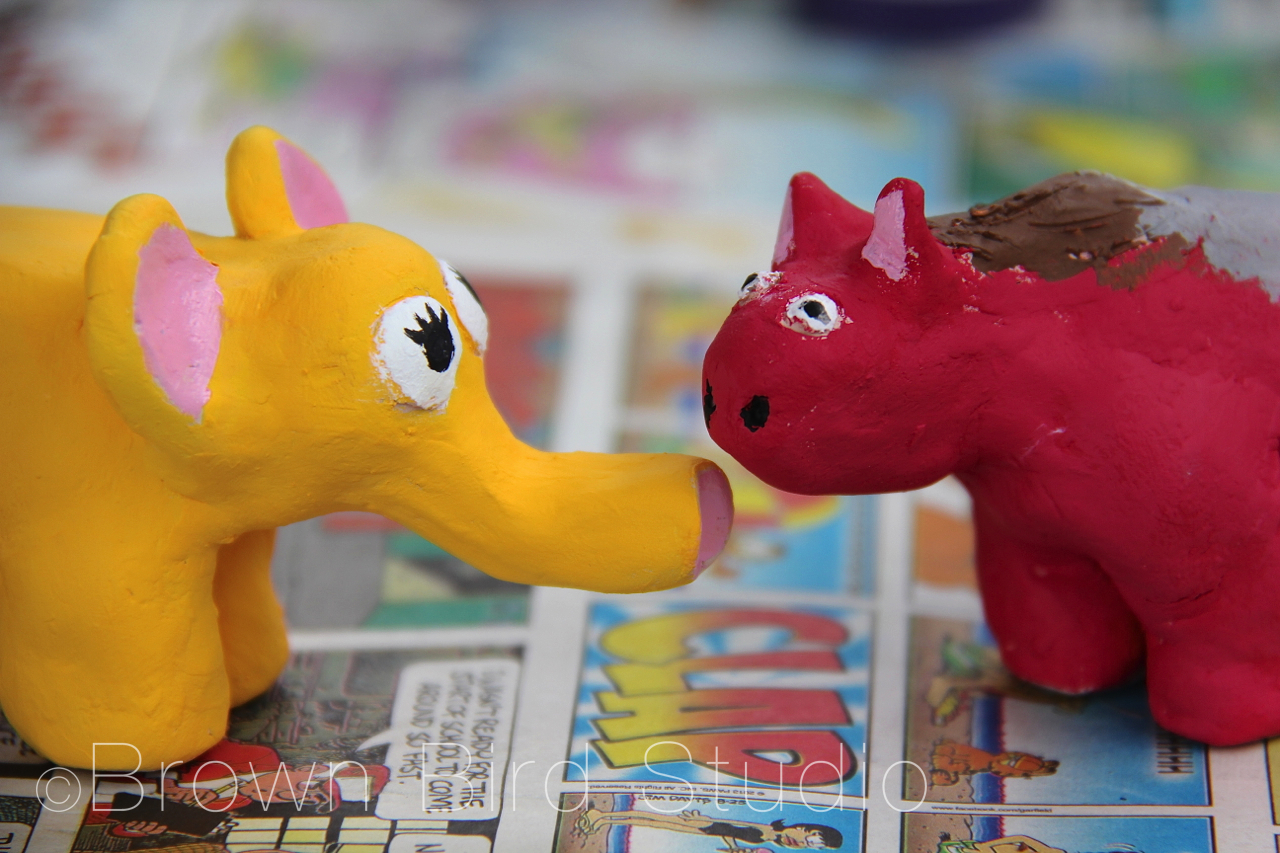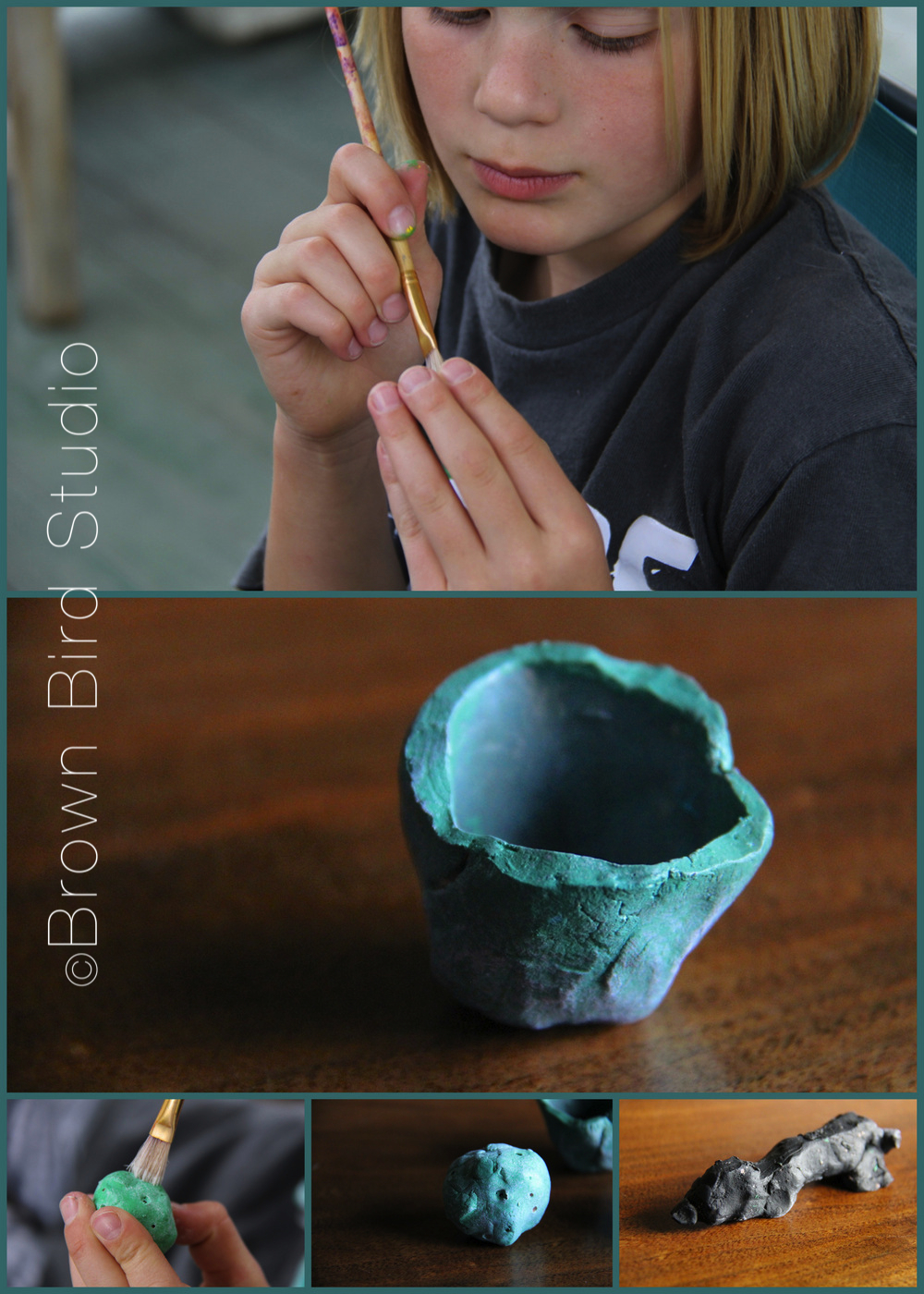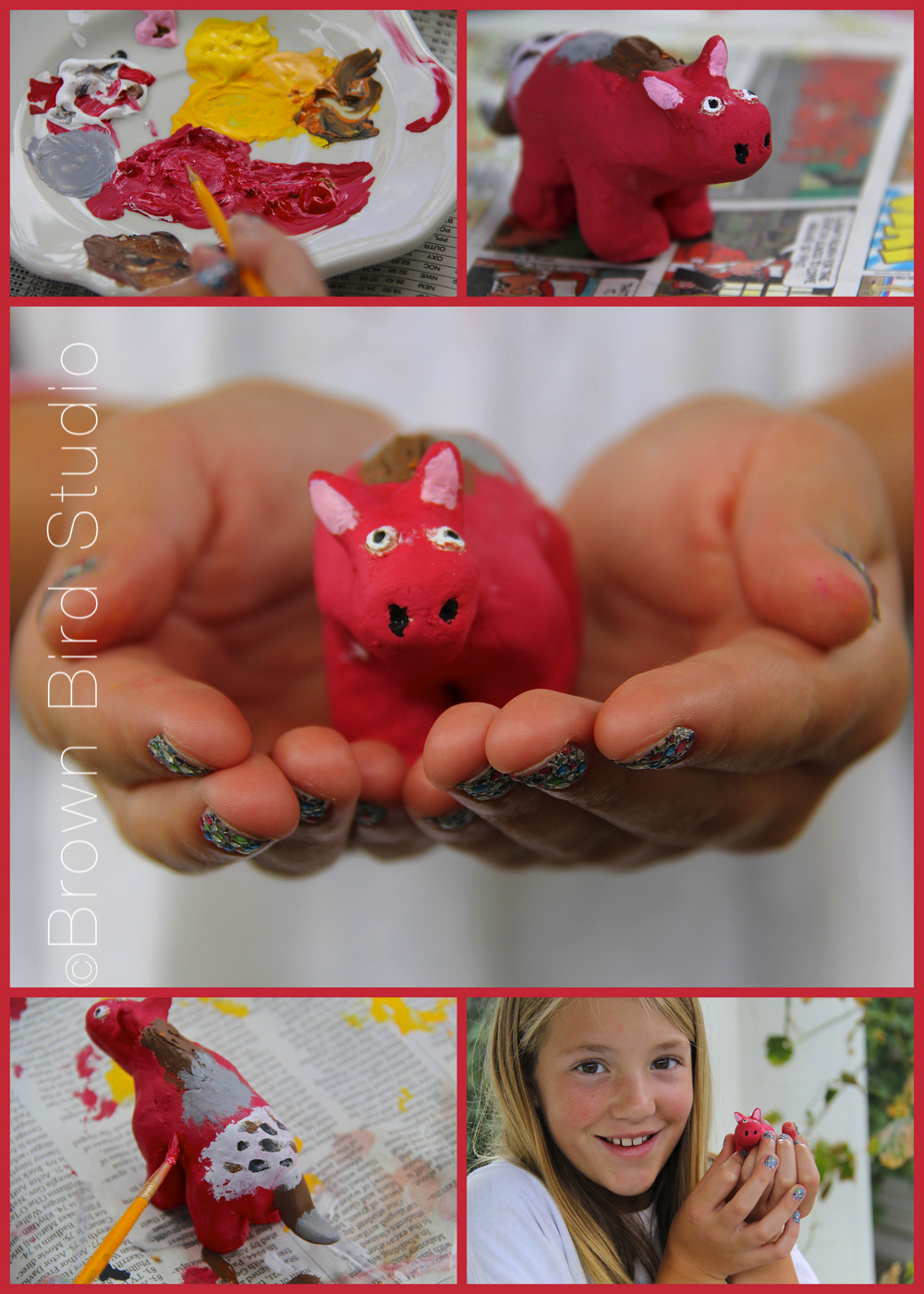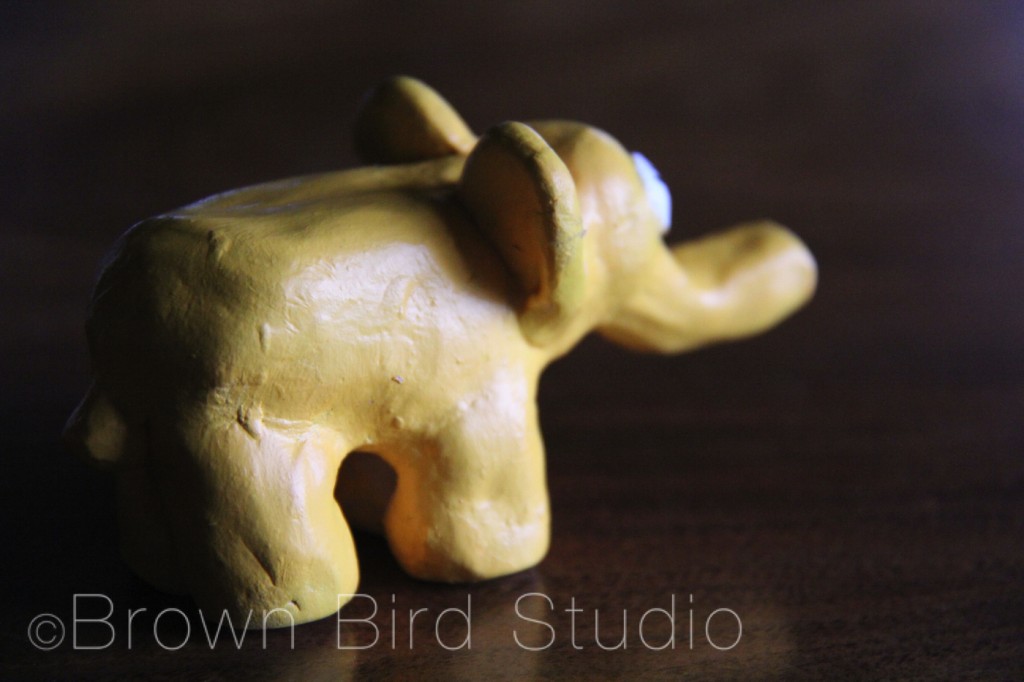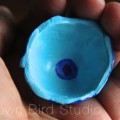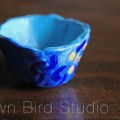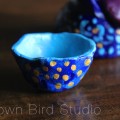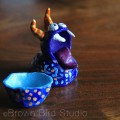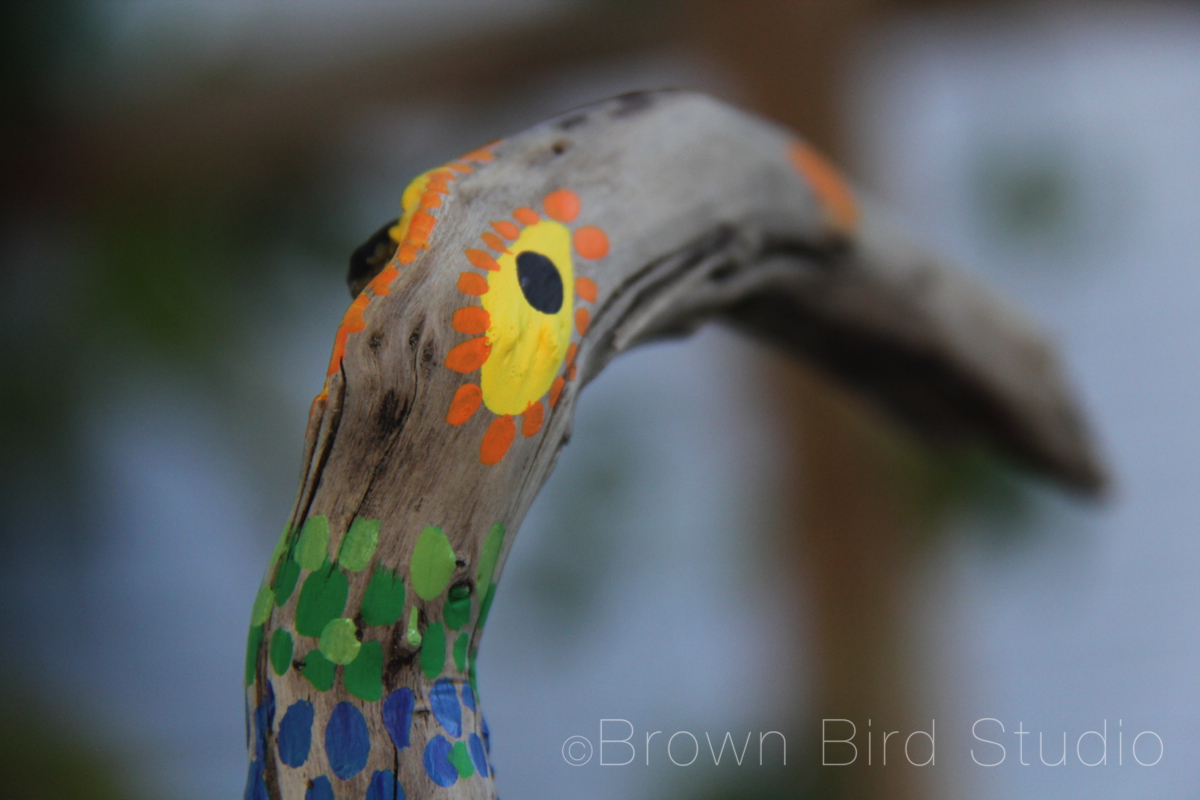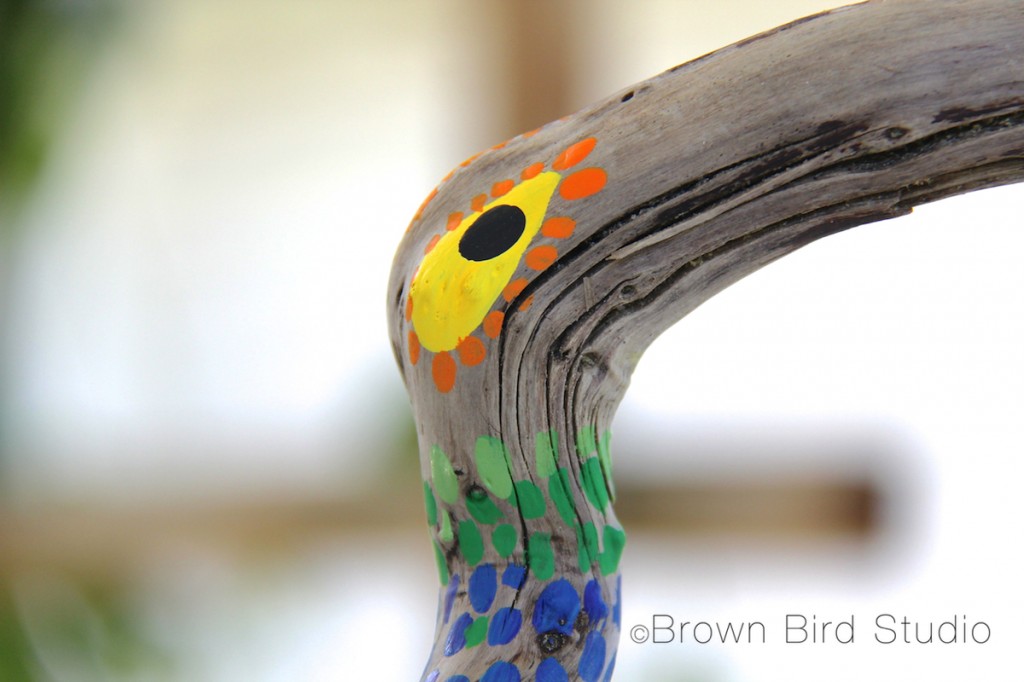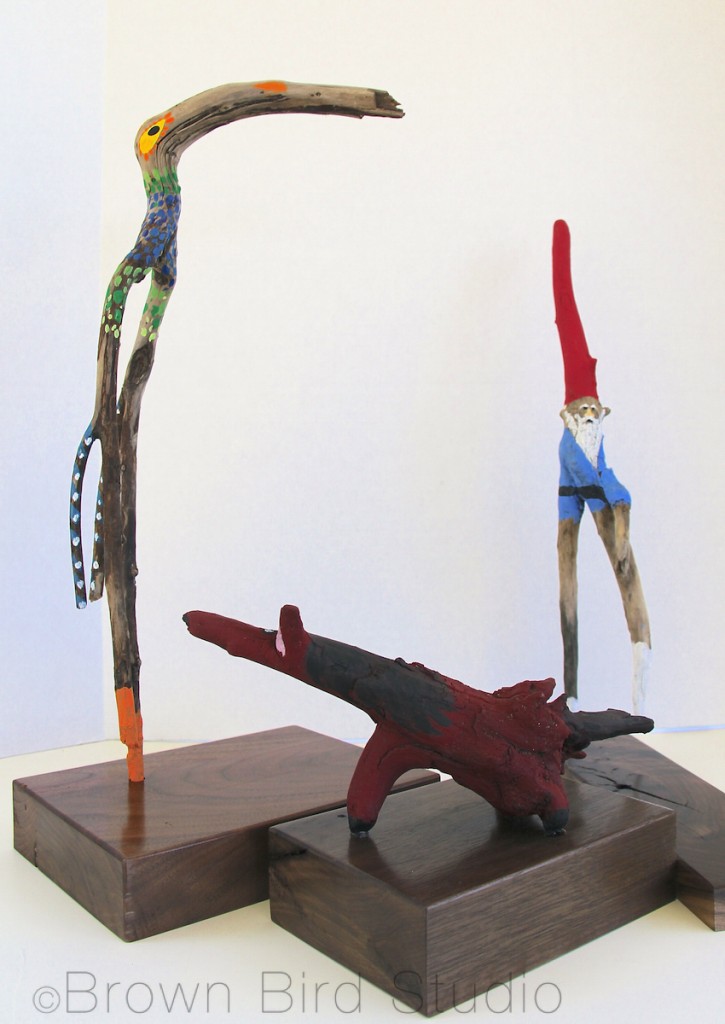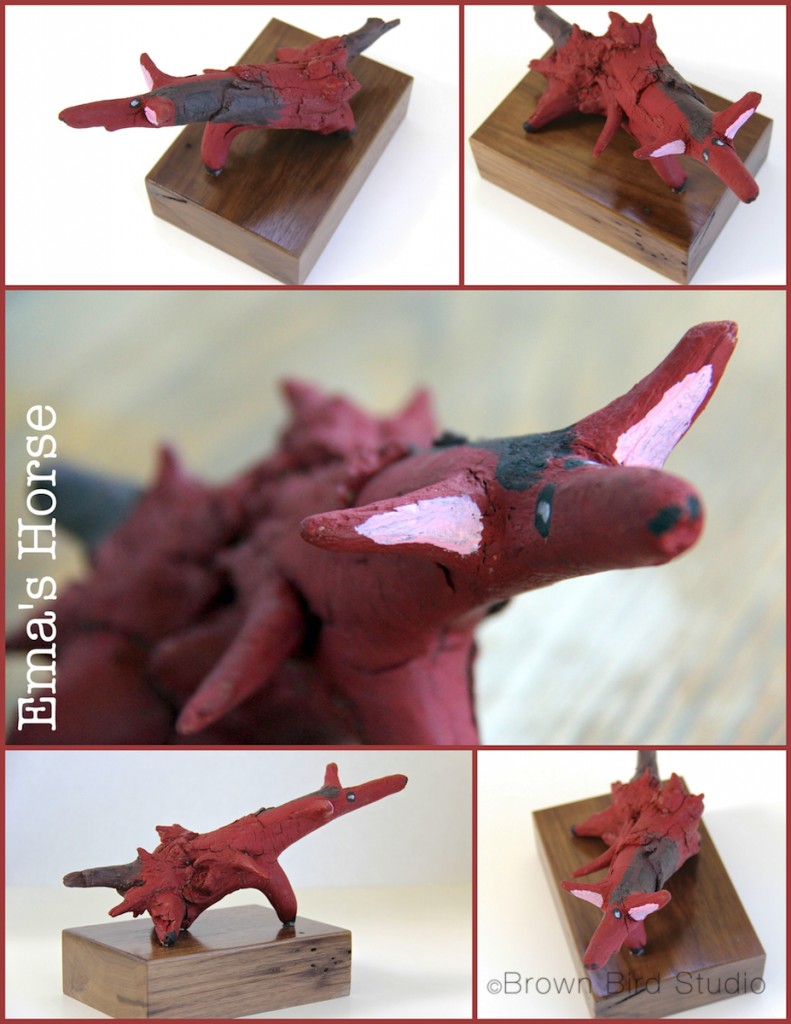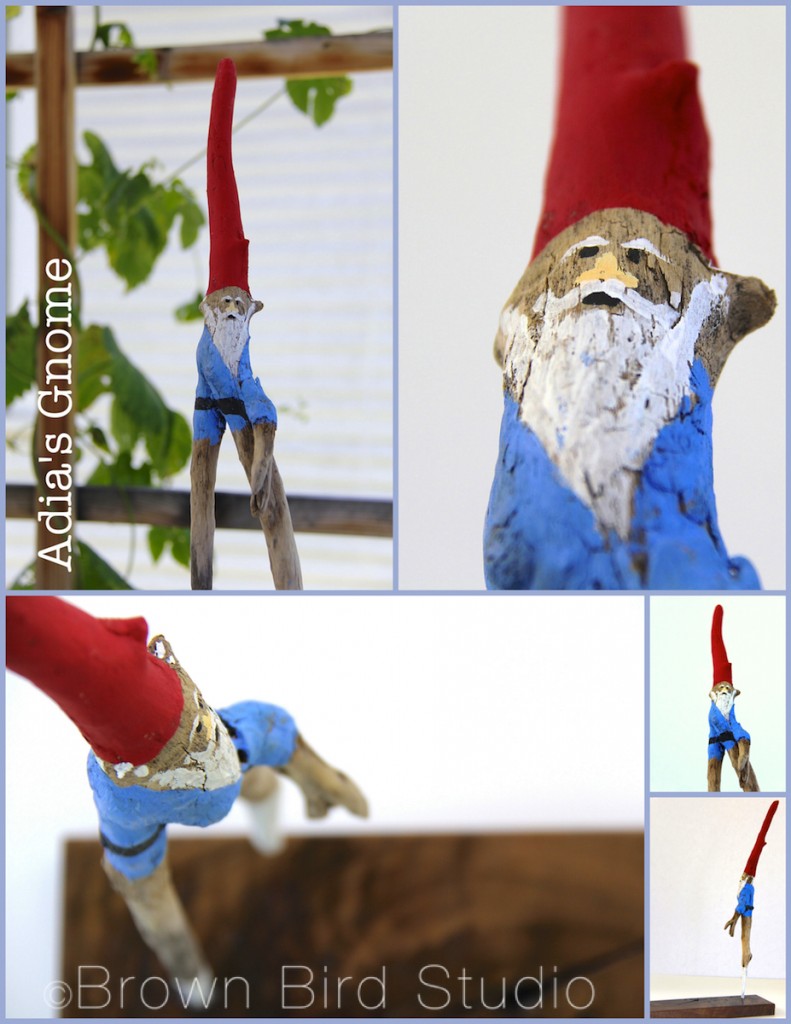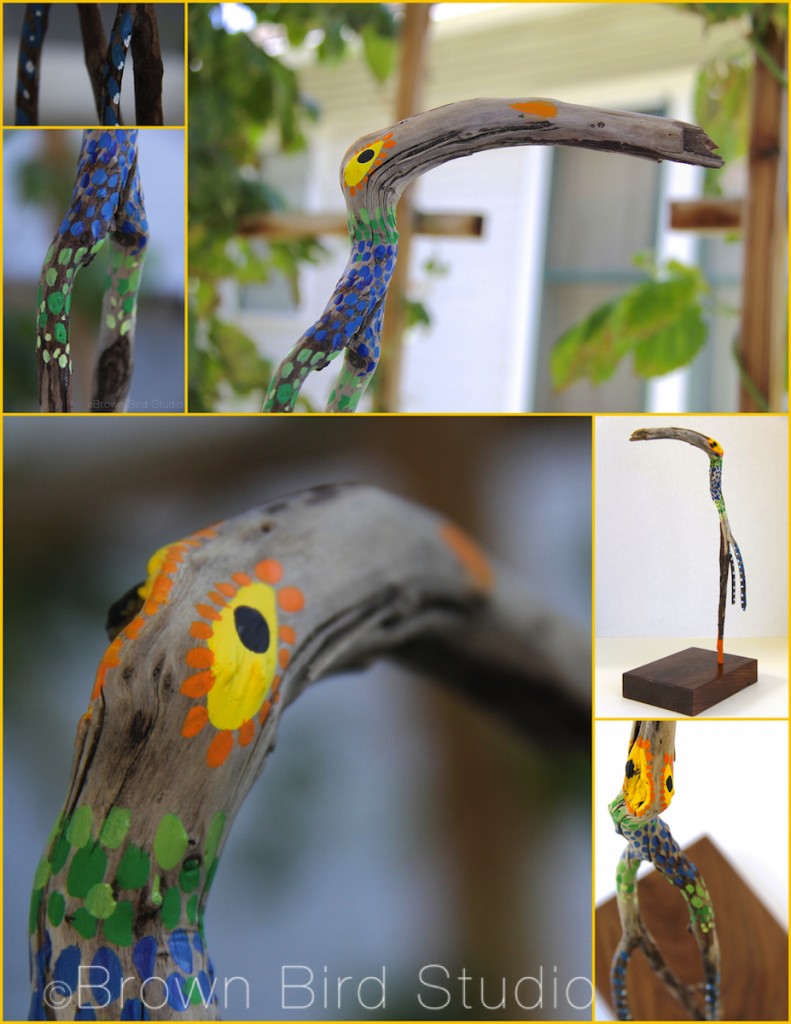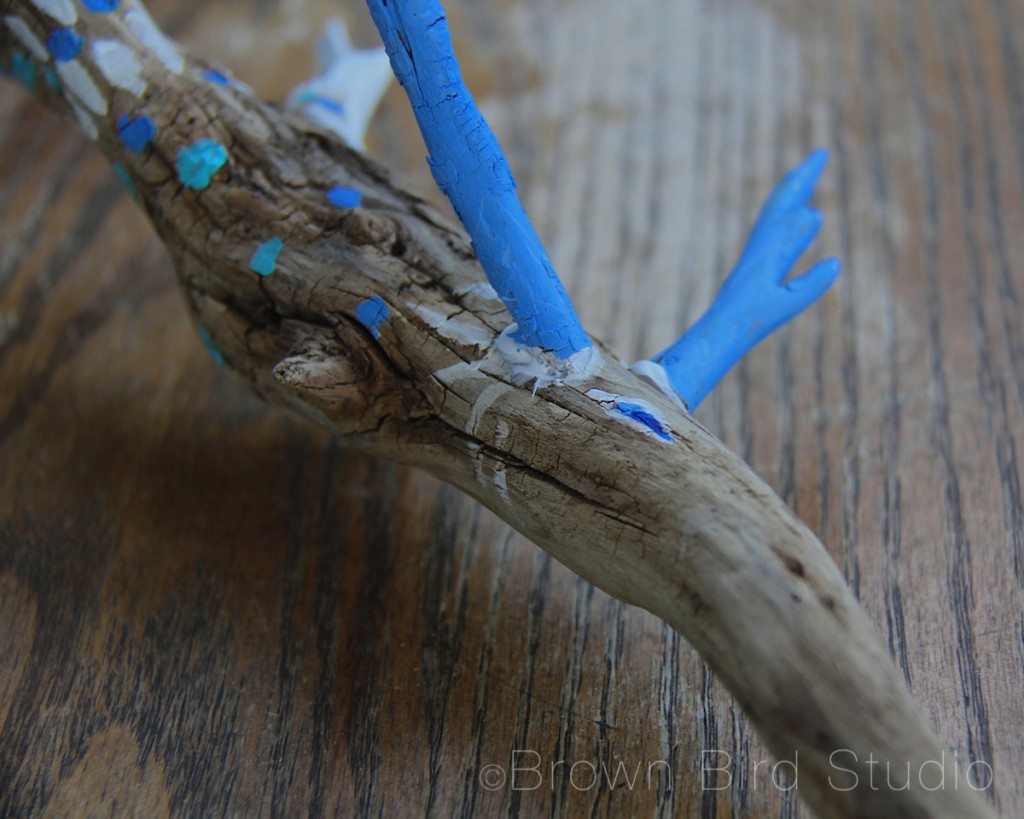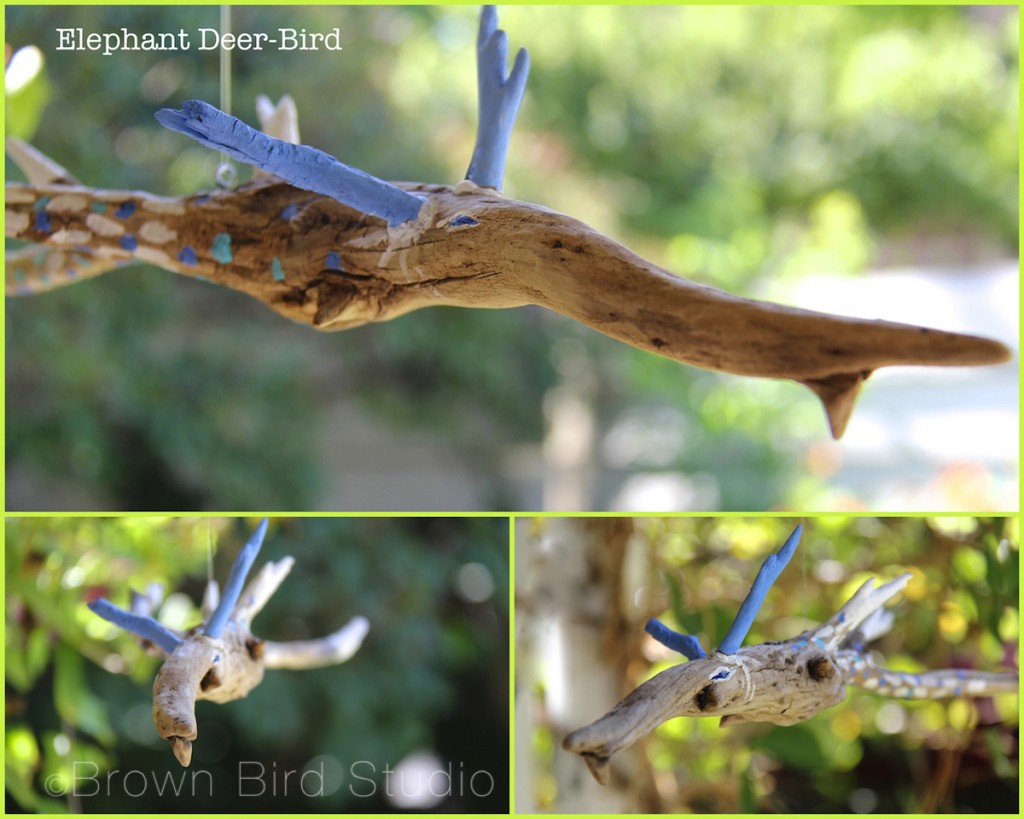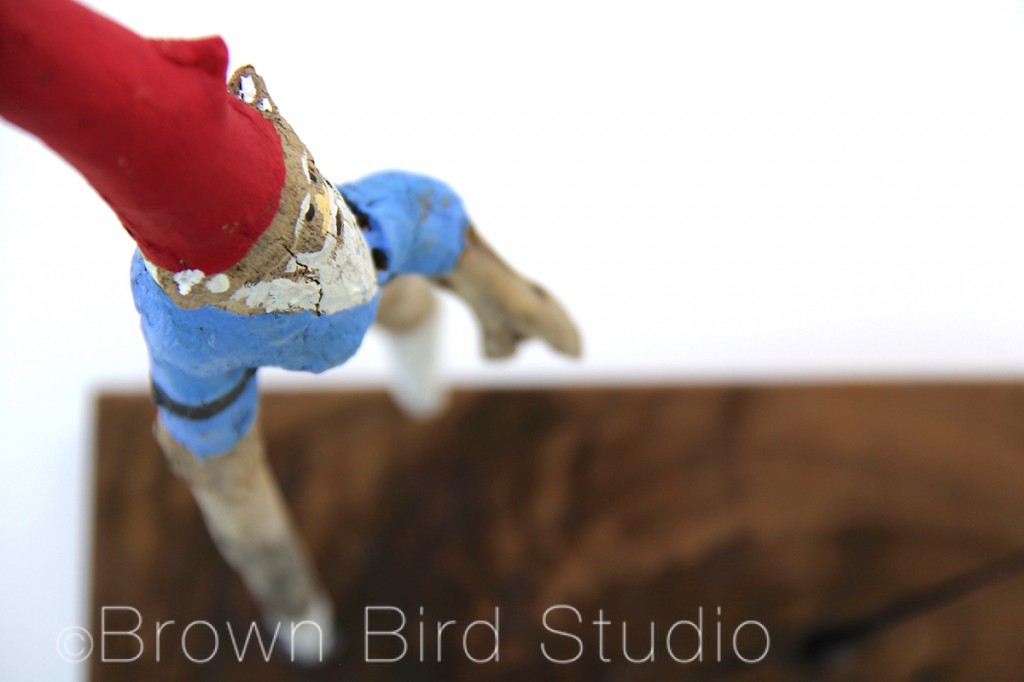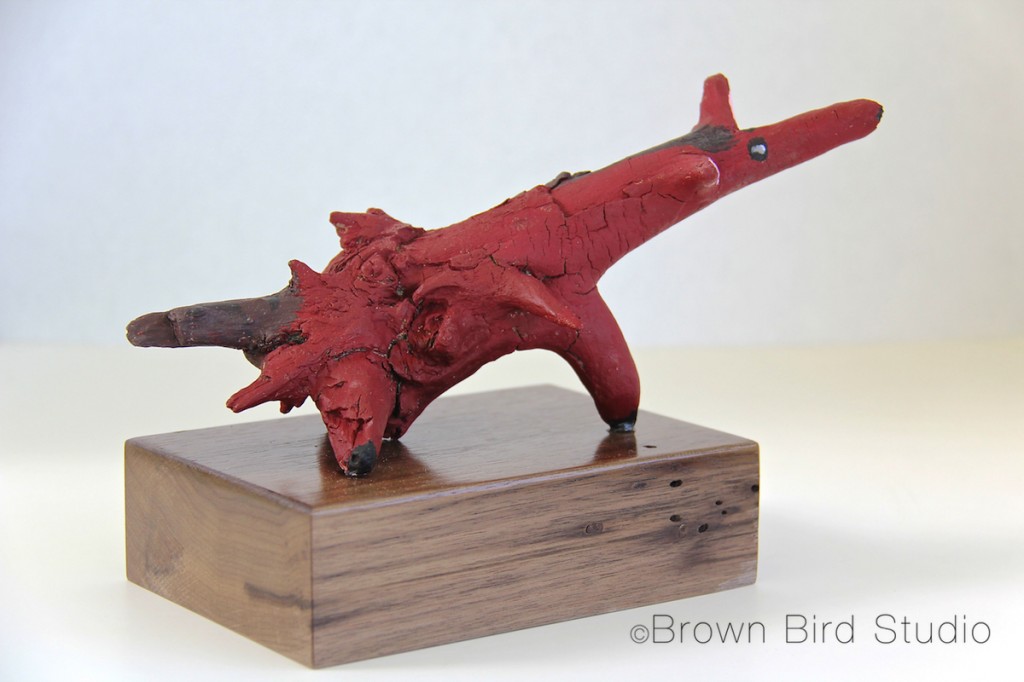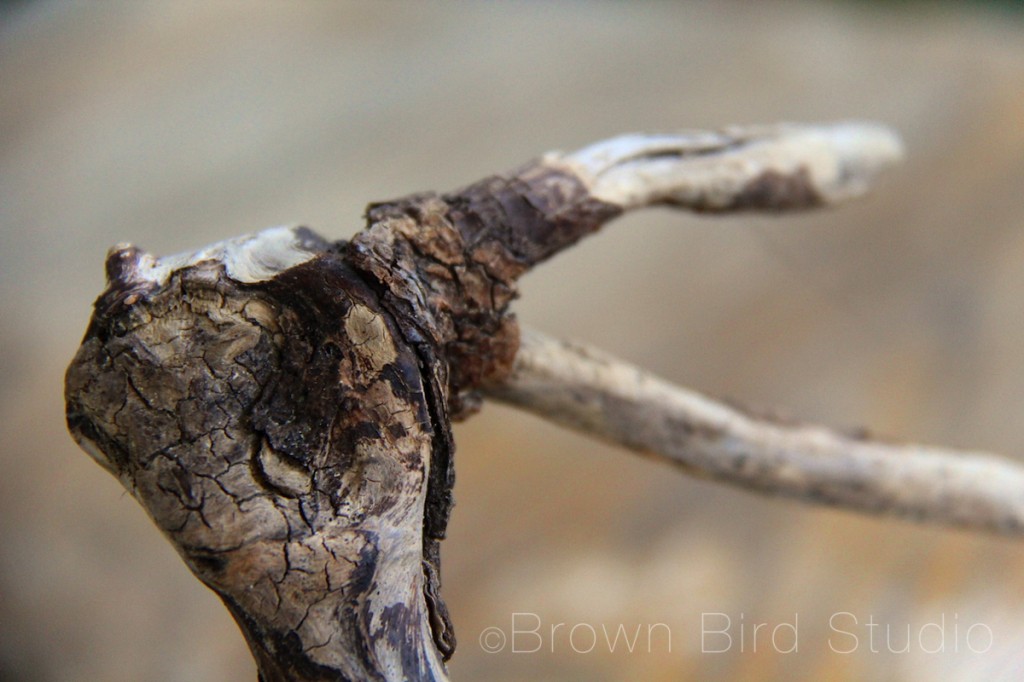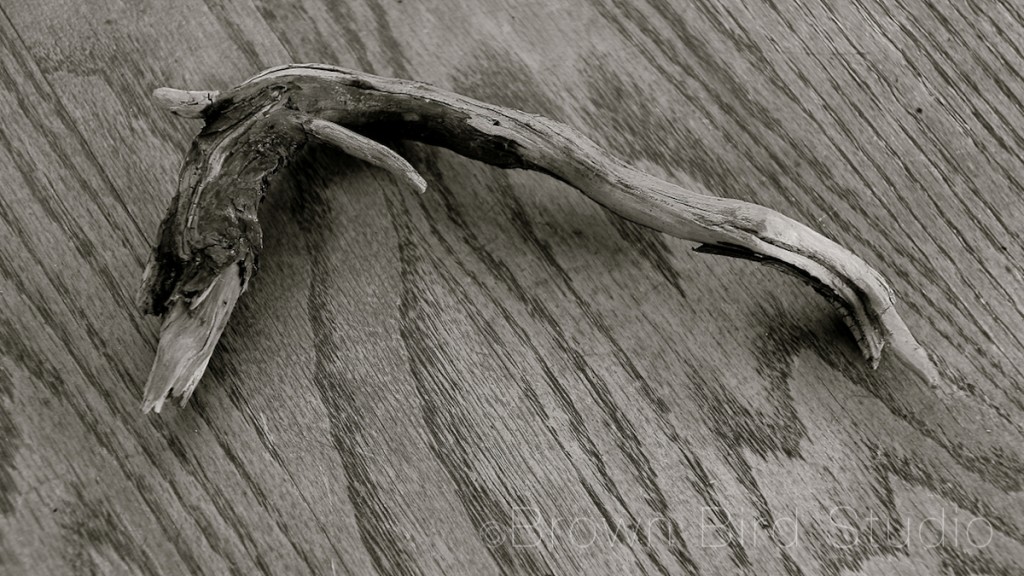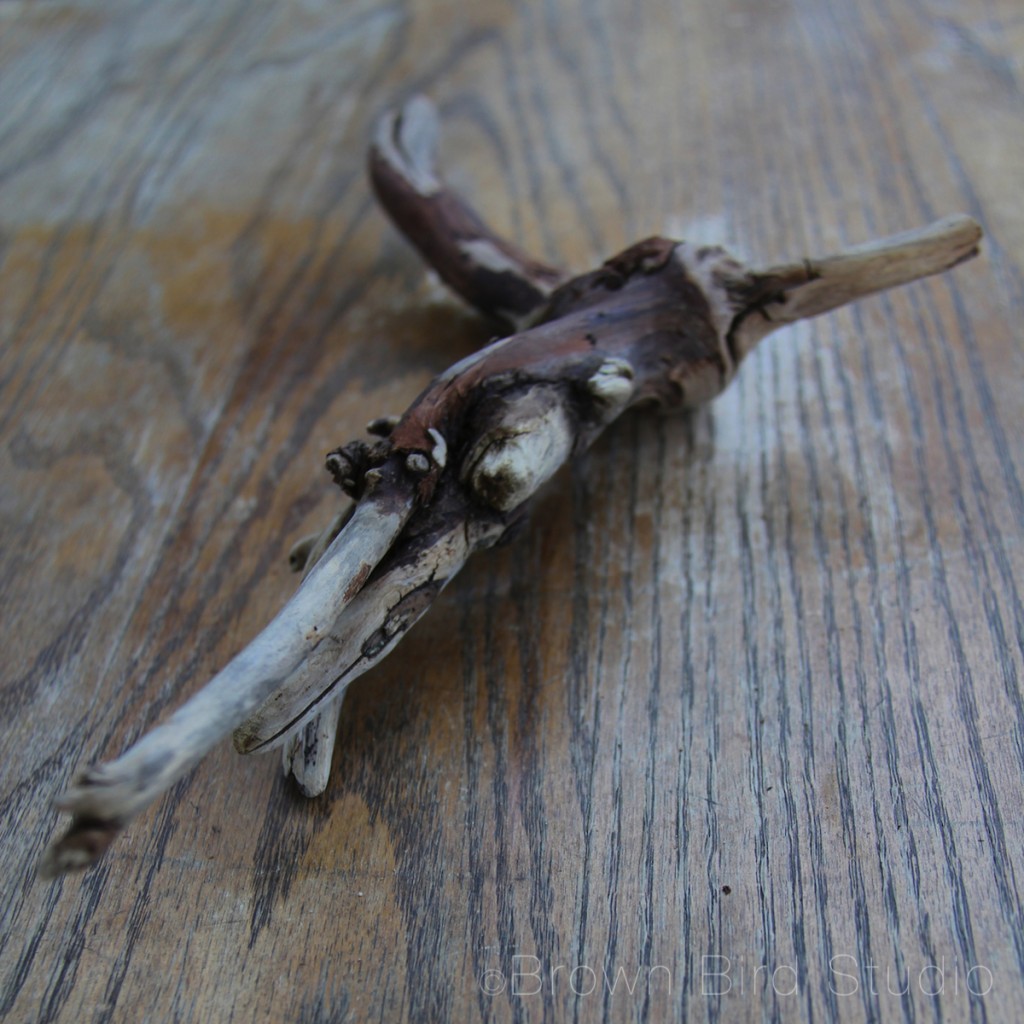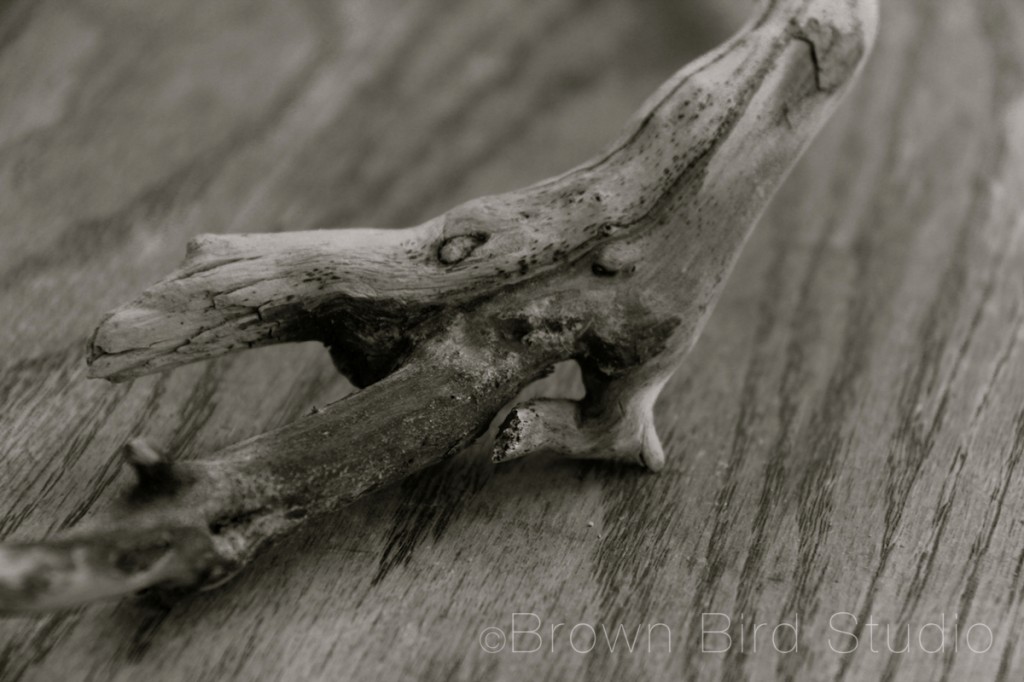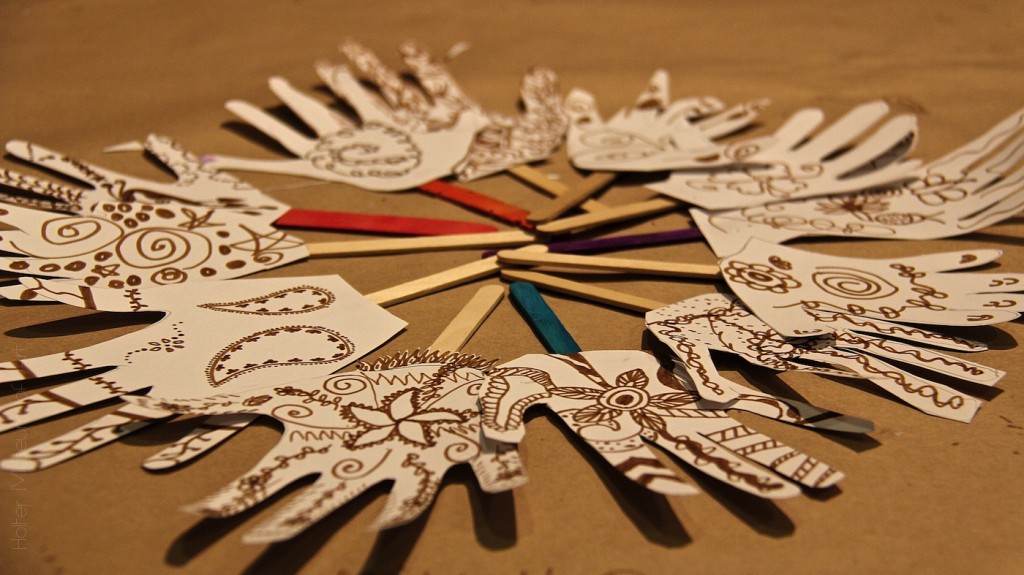
Last Saturday, the Holter Museum of Art held KidWorks! — it’s 23rd annual arts festival for kids. What a blast!! I had an amazing opportunity to help put on this fun event and boy was it alot of work. Yet, when we opened the doors of the museum at 10:00 am, just like Connie, Judy, Sondra and Hannah told me, the festival took care of itself. A gigantic bulldozer of little kids and and their significant adults moved through the museum playing, delighting, learning, appreciating, thoroughly enjoying themselves and getting a messy education in the wonderment of art.
For me — as a docent — it was incredibly fun (I hardly stopped smiling except when I was concentrating,) extremely exhausting (the tables were set to little kid height and my back hurt like hell at the end of the day) but so, so fulfilling to share my enthusiasm about art with this many kids and their peeps.
I absolutely loved witnessing the diversity of approaches. Every child, has a unique way of seeing the world and expressing what they see! As docents, we have to Let Go of Results and Outcomes. Allow Mess. Delight in Oops. Multi-task-yet-Focus. Smile. Laugh. Make Eye Contact. Then. Clean. Up.
Well … it seems at the Holter, “docent” is a fancy word for a volunteer who:
- works really hard
- has lots of fun with peers and with the public
- stays longer than expected to clean up the mess
- knows how to laugh and goof
- loves to share his/her passion for the arts
- gets training to use Visual Thinking Strategy in educational museum tours
- has a lot of energy (enough to keep up with kids of all ages!)
- has an awesome opportunity to guide kids, teens and adults in appreciating art through tours and hands-on activities
- can think on her/his feet, improvising when necessary
- doesn’t mind getting down and messy
- knows that every individual’s experience and ideas are valid
- helps organize and put on the biggest and best kids’ arts festival anywhere around
- then watches the magic happen as our doors open to over 800 participants
that’s alot to pack into one 6-letter word!
The Holter docents I have the privilege to work with, are a diverse group: outgoing, intelligent, friendly and helpful to new members of the team. We are all willing to learn from our mistakes and educate ourselves continuously so we are the best “art guides” the Holter could possibly have. It helps that we have some docents who are great leaders — super organized and experienced. It also helps that the educational staff (Sondra, Aubrey and Hannah) are so enthusiastic about their jobs. I have about half of the skills I need, to be an amazing docent. I’m working on the rest. But boy, was it fun, fun fun to help make KidWorks! happen.
Sorry about the photo-intensive post today. I just couldn’t resist! There were so many sweet moments and precious connections made during KidWorks! that I can’t resist posting these. Below is a gallery with a few more images from the festival.
If you attended KidWorks, or volunteered at the festival, won’t you write a short (or long) comment to say how you experienced it? Thank you!
